These low-maintenance, trailing vines are beyond easy to take care of and come in a range of beautiful varieties, making them ideal for beginners and seasoned plant lovers alike.
Of course, simply learning the different variations is only part of the journey, and trust me, there are a lot, and thus I’m covering them all here. Aside from being able to pick and identify your favorite pothos, we will cover pruning, watering, and common issues you might encounter. Don’t be intimidated, this post (literally) everything you need to know about taking care of pothos plants. Need more plant content? Don’t miss my 9 Hanging Plants That Do Not Need Sunlight, how to grow herbs, and even great hanging plants for the outdoors.
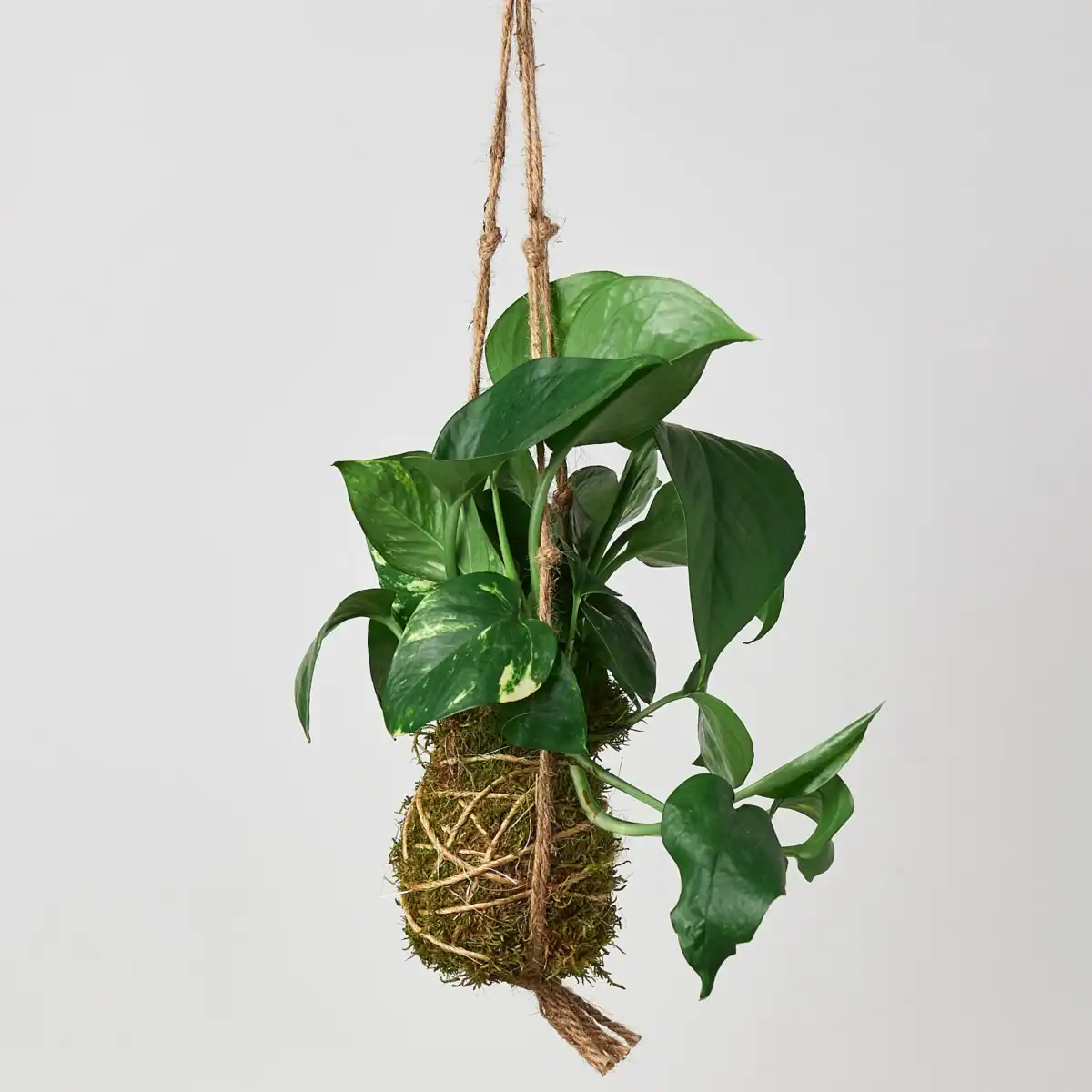
Table of Contents
The Types of Pothos Plants
Baltic Blue Pothos
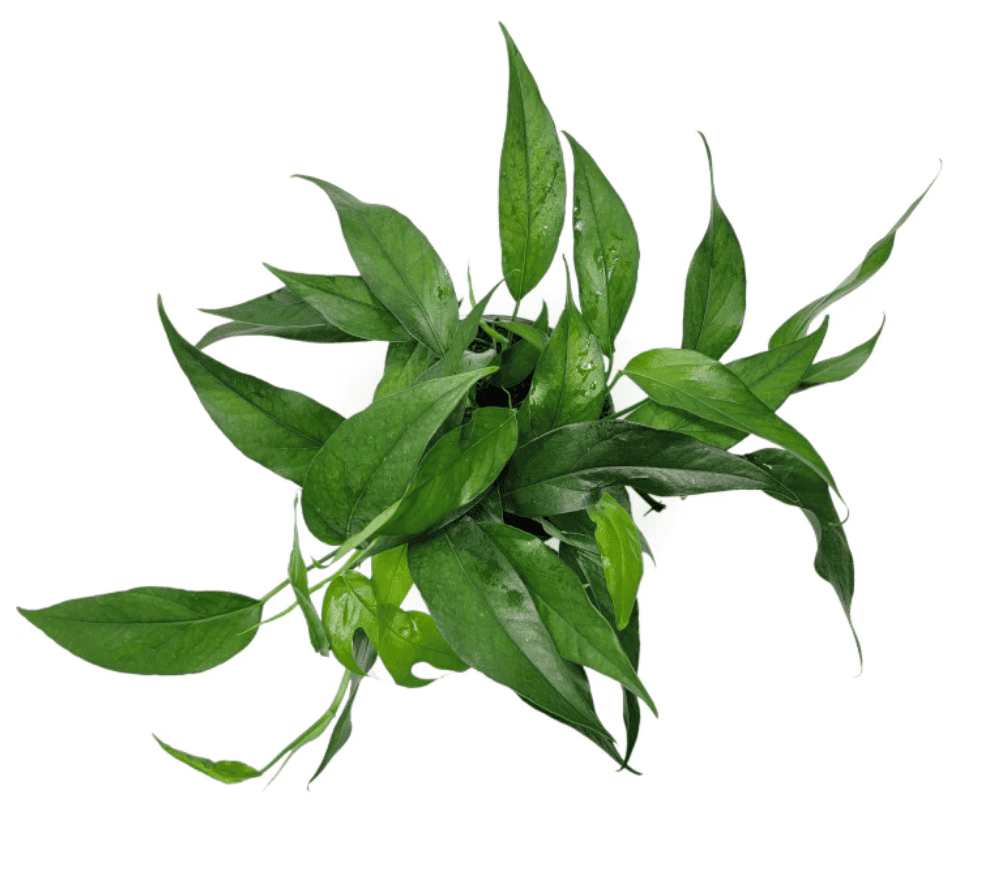
Fast-growing and easy to care for, the Baltic blue pothos is best known for its large, silvery-blue leaves. This plant loves to climb, with vines often reaching up to 20 feet or more in the wild!
| Common Name(s) | Baltic blue pothos |
| Botanical Name | Epipremnum pinnatum Baltic Blue |
| Family | Araceae |
| Plant Type | Perennial vine |
| Mature Size | 10 to 12 ft. tall indoors, 20 to 30 ft. tall outdoors |
| Sun Exposure | Partial, medium to bright indirect sunlight |
| Soil Type | Moist, well-draining |
| Soil pH | Acidic, 6.1 to 6.8 |
| USDA Hardiness Zones | 10-12 |
| Native Area | Asia, Australia |
Brazil Pothos
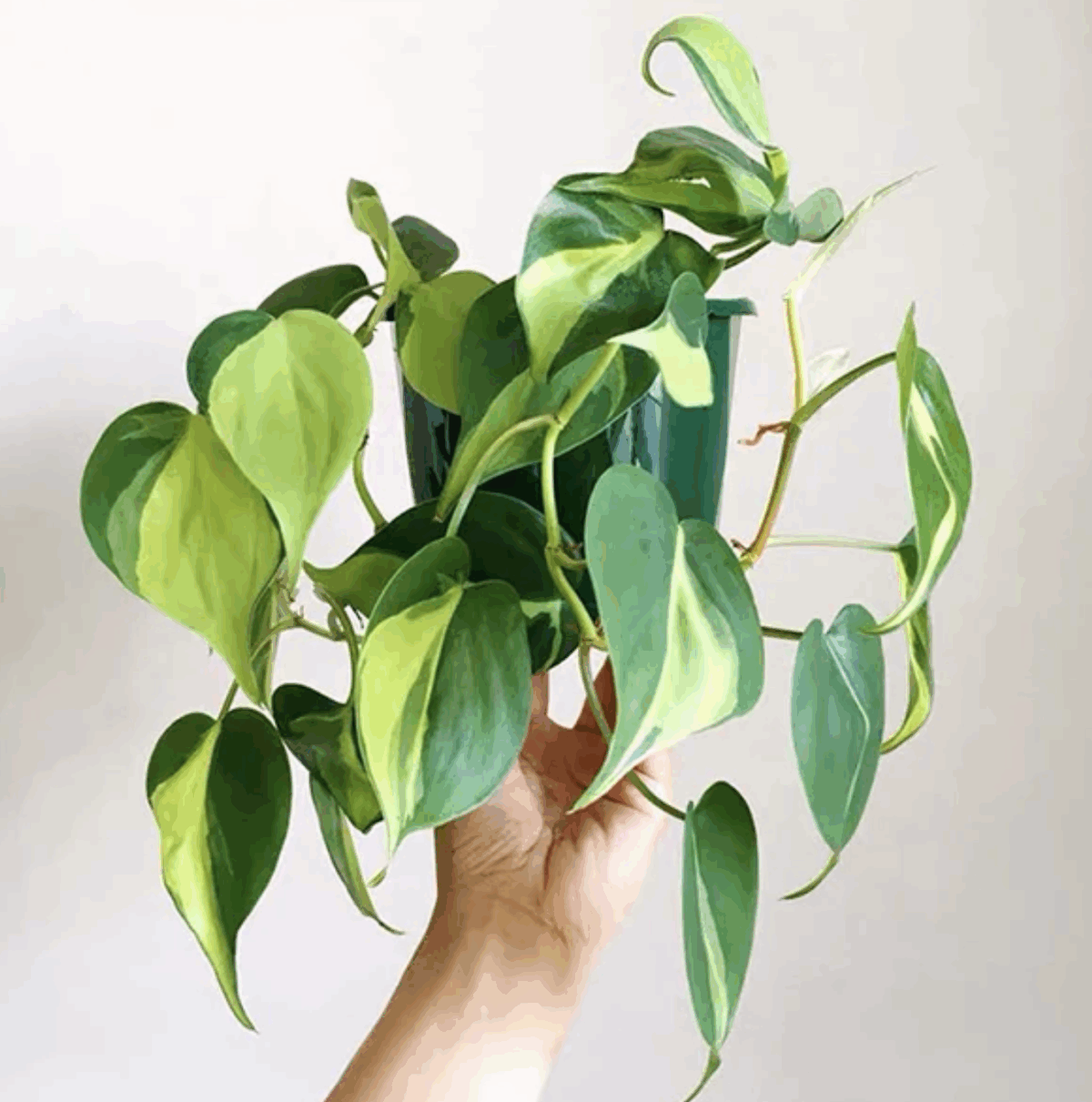
The Brazil pothos stands out when placed near other types of pothos plants, thanks to the light-green variegation featured on its heart-shaped leaves. This makes sense, though. While this plant is often referred to as a pothos, it’s technically not a pothos: it’s a type of philodendron!
| Common Name(s) | Philodendron Brasil |
| Botanical Name | Philodendron hederaceum Brasil |
| Family | Araceae |
| Plant Type | Perennial vine |
| Mature Size | 4 to 6 ft. tall, 1 to 6 ft. wide |
| Sun Exposure | Partial, shade to bright indirect sunlight |
| Soil Type | Moist, well-draining |
| Soil pH | Neutral to acidic, 5.0 to 7.0 |
| USDA Hardiness Zones | 10-12 |
| Native Area | Central America, Caribbean |
Cebu Blue Pothos
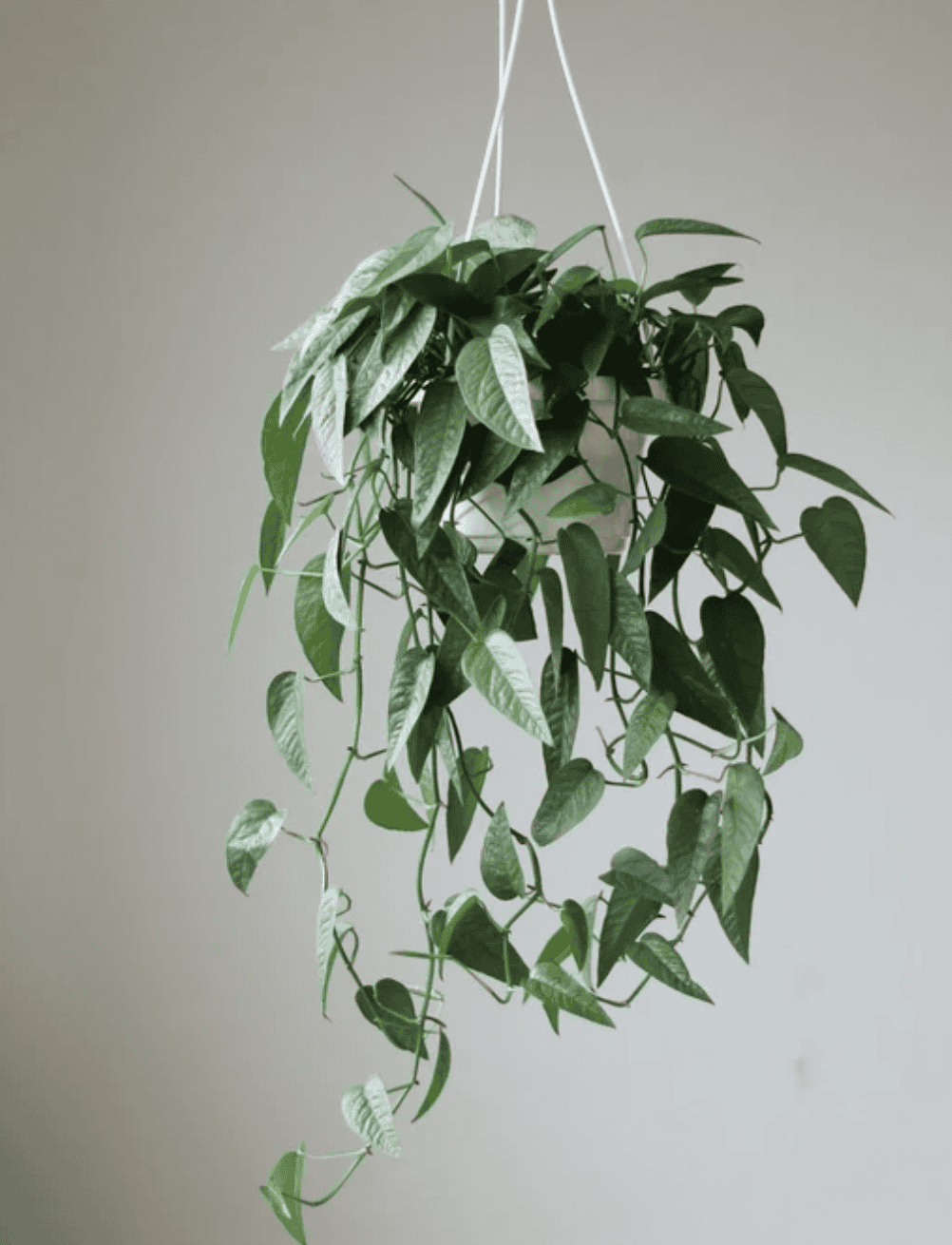
The Cebu blue pothos is a true pothos plant. Well-known for the metallic sheen on its silvery-blue leaves, this plant is perfect for pictures and extremely easy to grow indoors.
| Common Name(s) | Cebu blue pothos, blue pothos |
| Botanical Name | Epipremnum pinnatum Cebu Blue |
| Family | Araceae |
| Plant Type | Evergreen, vine |
| Mature Size | 8 ft. in length indoors, 40 ft. in length outdoors |
| Sun Exposure | Partial, medium to bright indirect light |
| Soil Type | Moist, well-draining |
| Soil pH | Alkaline, neutral, acidic, 5.5 to 7.0 |
| USDA Hardiness Zones | 9-11 |
| Native Area | Asia |
Dragon’s Tail Pothos
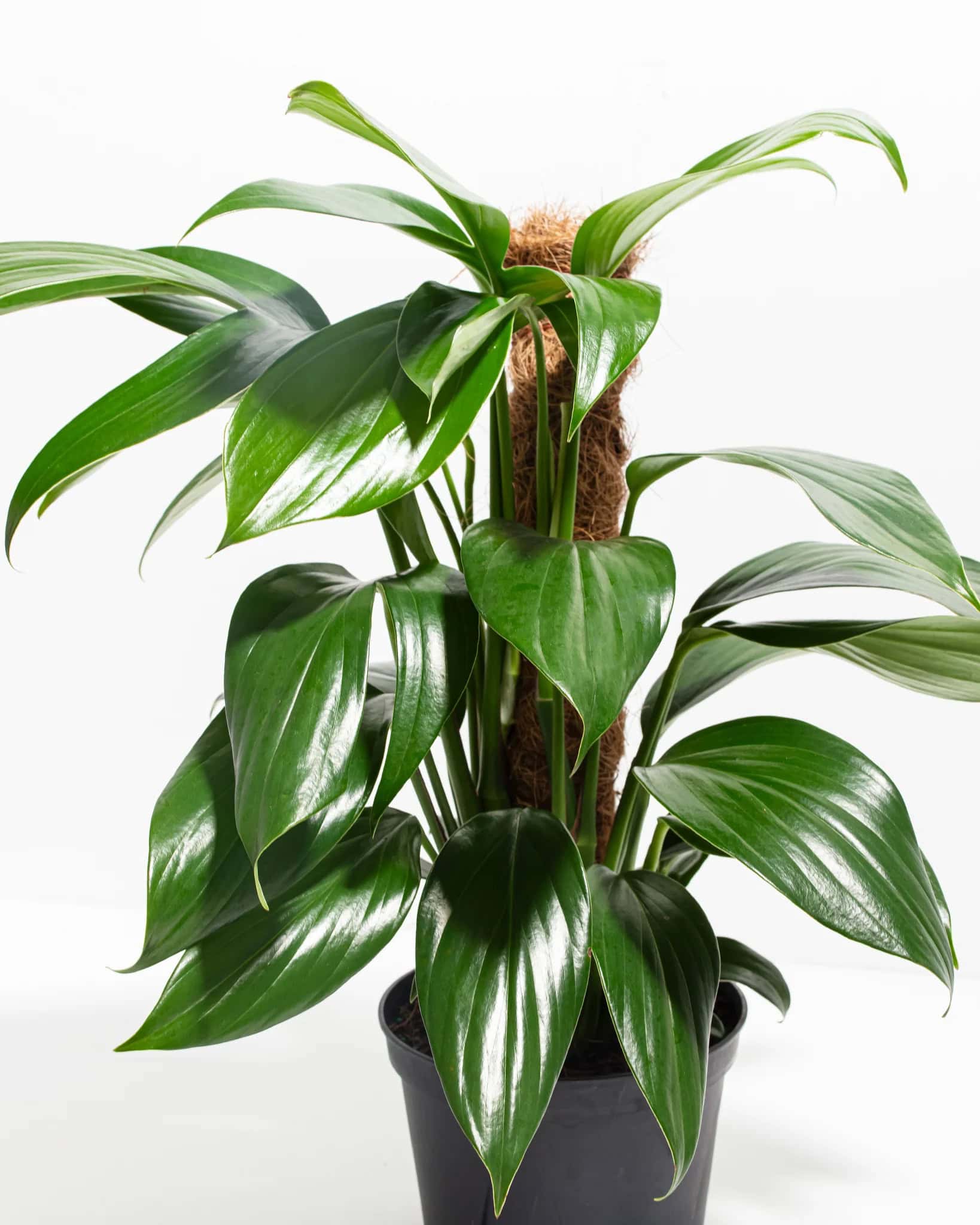
True to its name, the Dragon’s Tail Pothos is a tropical vine that’s characterized by long, narrow dark green leaves, often developing fenestrations that mimic the texture of scales.
| Common Name(s) | Dragon-tail plant, silver vine, centipede tongavine |
| Botanical Name | Epipremnum pinnatum |
| Family | Araceae |
| Plant Type | Tropical vine |
| Mature Size | 20 to 60 ft. tall |
| Sun Exposure | Partial, bright indirect sunlight |
| Soil Type | Well-draining |
| Soil pH | Acidic, 5.5 to 7.0 |
| USDA Hardiness Zones | 10-11 |
| Native Area | Asia, Australia |
Emerald Pothos
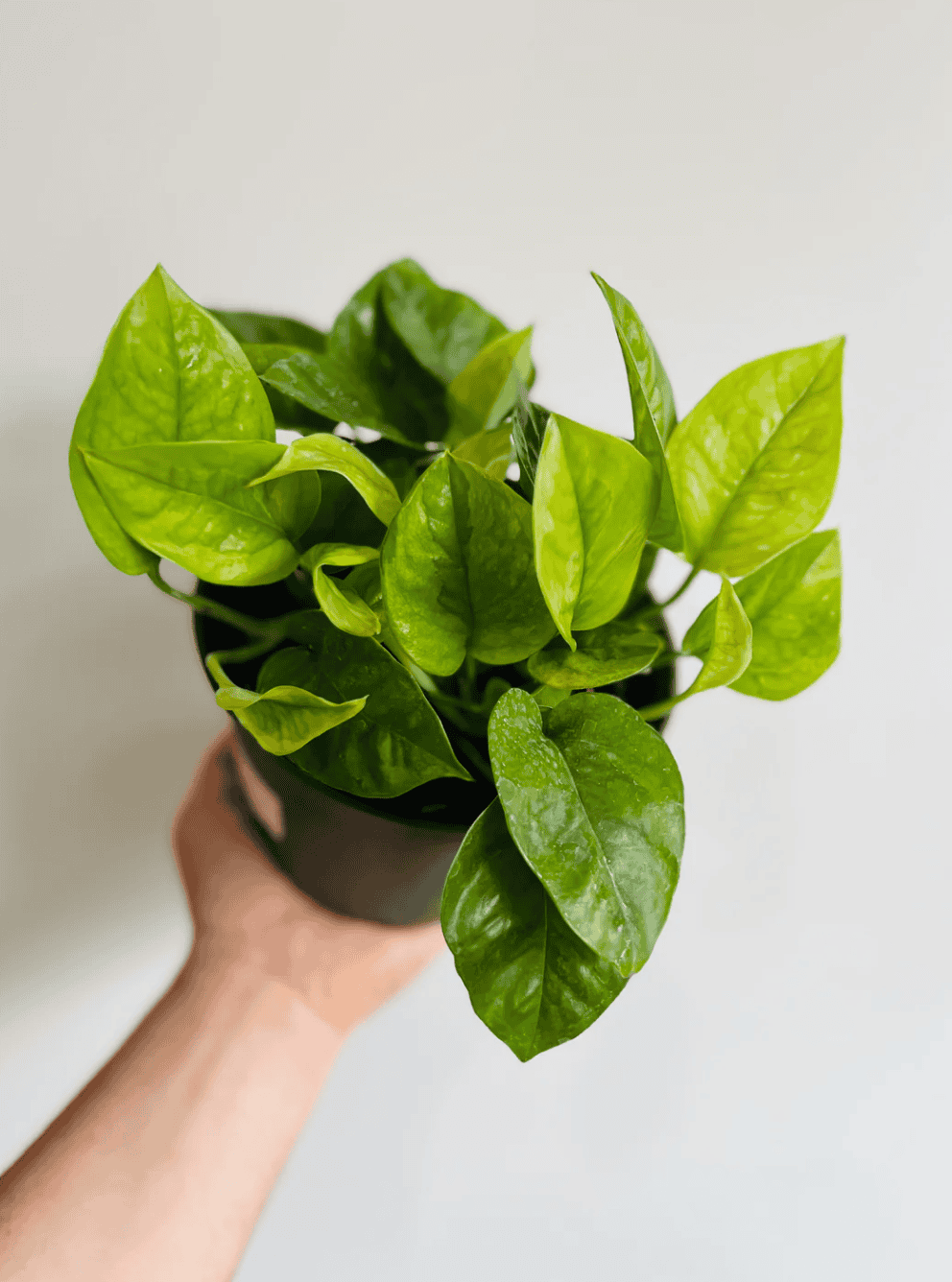
Like many other common types of pothos plants, the Emerald Pothos is a cultivar. Characterized by smaller leaves covered in variegated splotches and streaks, the plant does best in bright, indirect sunlight.
| Common Name(s) | Aureum Emerald, E. Aureum Emerald |
| Botanical Name | Epipremnum aureum Emerald |
| Family | Araceae |
| Plant Type | Tropical |
| Mature Size | 6 to 12 inches tall, 12 to 18 inches wide |
| Sun Exposure | Bright, indirect sunlight |
| Soil Type | Well-draining |
| Soil pH | Slightly acidic, 6.0 to 6.5 |
| USDA Hardiness Zones | 9-11 |
| Native Area | None (cultivar) |
Glacier Pothos
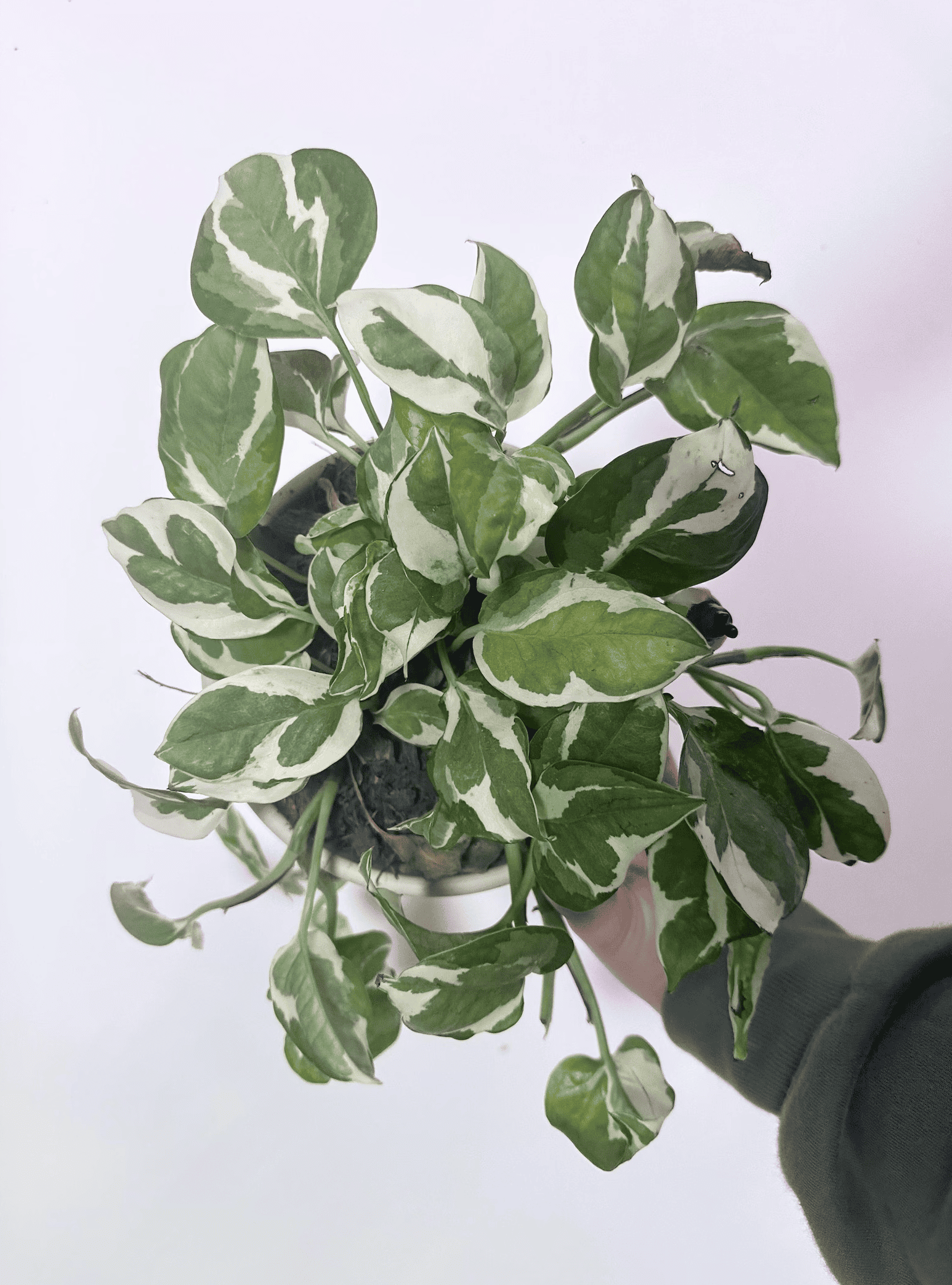
Preferring partial but bright light, the Glacier pothos is one of the easier plants to grow at home. These low-maintenance plants are best known for their smaller leaves. These oval-shaped leaves are adorned with shades of white and cream, putting the “Glacier” in Glacier Pothos.
| Common Name(s) | Glacier pothos |
| Botanical Name | Epipremnum aureum Glacier |
| Family | Araceae |
| Plant Type | Perennial vine |
| Mature Size | 6 ft. long, 1 to 3 feet wide |
| Sun Exposure | Partial, |
| Soil Type | Moist, well-draining |
| Soil pH | Acidic, 6.1 to 6.8 |
| USDA Hardiness Zones | 10-11 |
Global Green Pothos
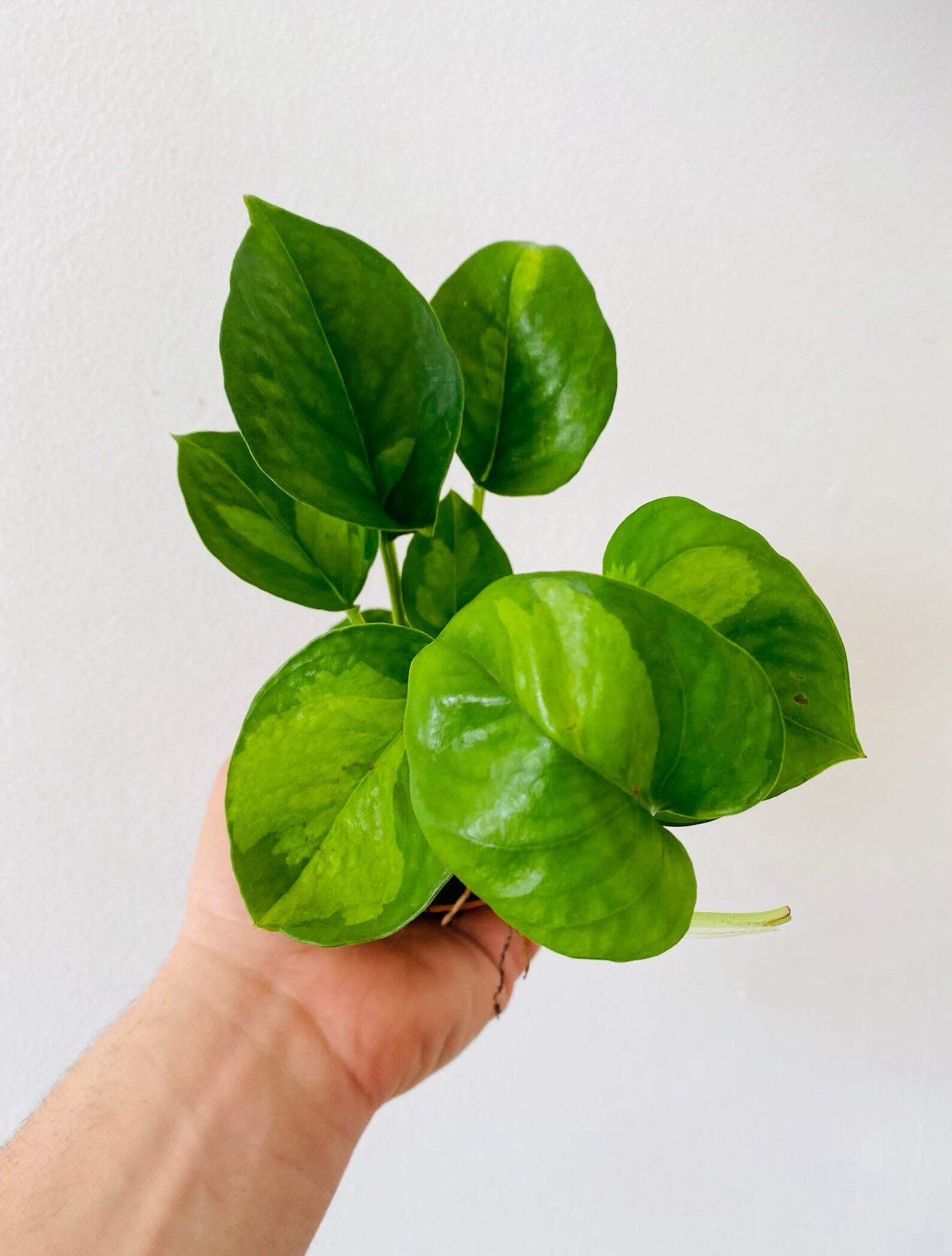
Closely related to the Epipremnum golden pothos, the Global green pothos is growing in popularity. Best known for the light variegations on its dark green leaves, this cultivar looks right at home with its vines trailing from a hanging basket.
| Common Name(s) | Epipremnum aureum ‘Global Green’ |
| Botanical Name | Epipremnum aureum Global Green |
| Family | Araceae |
| Plant Type | Evergreen vine |
| Mature Size | Up to 10 ft. in length, 3 ft. width |
| Sun Exposure | Bright, indirect sunlight |
| Soil Type | Well-draining |
| Soil pH | Slightly acidic, 6.0 to 6.5 |
| USDA Hardiness Zones | 10-12 |
| Native Area | None (cultivar) |
Golden Pothos
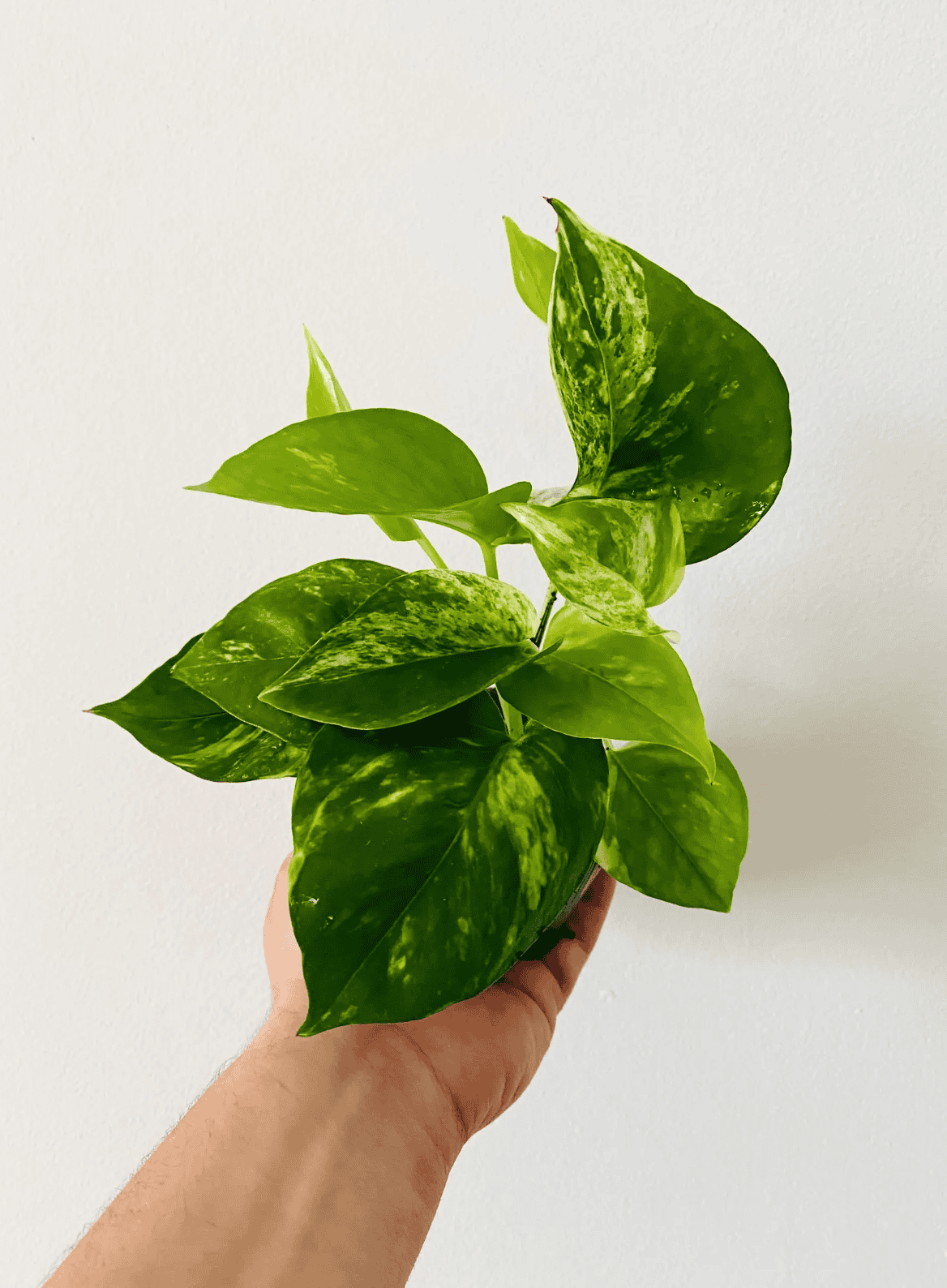
The Golden pothos is often just referred to by the common name “pothos”, which makes sense as it is the parent plant of many other types of pothos plants. This low-maintenance plant is easily identifiable by the yellow variegations spread across its green leaves. If you’re looking to start hanging pothos from a bookcase but don’t know which variation to choose, this classic is one you can’t go wrong with!
| Common Name(s) | Ceylon creeper, Devil’s ivy, ivy arum |
| Botanical Name | Epipremnum aureum |
| Family | Araceae |
| Plant Type | Evergreen, trailing vine |
| Mature Size | 6 to 10 ft. in length(indoors), up to 20 ft. in length (outdoors) |
| Sun Exposure | Bright, indirect sunlight |
| Soil Type | Well-draining |
| Soil pH | Slightly acidic, 6.0 to 6.5 |
| USDA Hardiness Zones | 10-12 |
| Native Area | Asia |
Harlequin Pothos
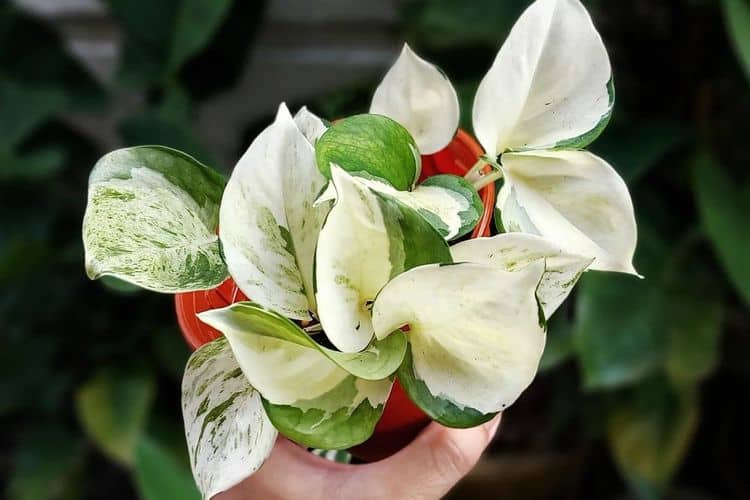
The Harlequin pothos can be easily identified by the mix of yellow, cream, and green variegations on its leaves. Though bright indirect light is preferred, it’s resilient enough to survive in lower-light areas, making it a beginner-friendly option.
| Common Name(s) | Harlequin Pothos, variegated Manjula Pothos |
| Botanical Name | Epipremnum aureum Harlequin |
| Family | Araceae |
| Plant Type | Evergreen, variegated vine |
| Mature Size | 6 ft. in length, 1 to 3 ft. in width |
| Sun Exposure | Bright, indirect sunlight |
| Soil Type | Well-draining |
| Soil pH | Slightly acidic, 6.0 to 6.5 |
| USDA Hardiness Zones | 10 to 12 |
| Native Area | Asia |
Hawaiian Pothos
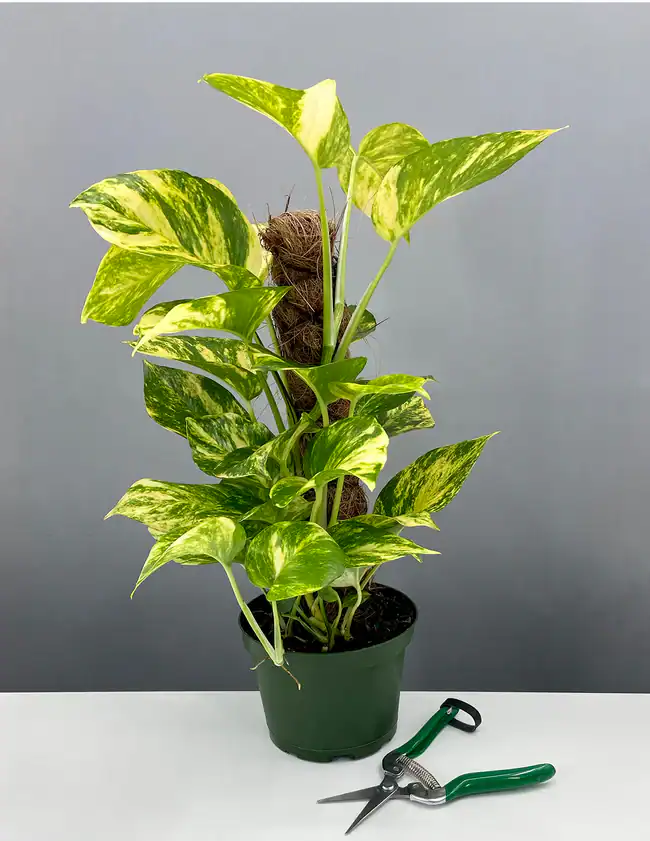
There are many different types of pothos plants, but the Hawaiian pothos is a cultivar you might want to consider if you prefer larger leaves. It’s best known for the light yellow flecks on its oversized leaves, as opposed to the deeper yellows often found on other varieties. Even better, it also functions as an effective air purifier.
| Common Name(s) | Hawaiian Pothos, giant pothos |
| Botanical Name | Epipremnum aureum Hawaiian |
| Family | Araceae |
| Plant Type | Vine |
| Mature Size | Up to 4 ft. tall |
| Sun Exposure | Full sun, bright indirect sunlight |
| Soil Type | Moist, well-draining |
| Soil pH | Slightly acidic, 6.1 to 6.8 |
| USDA Hardiness Zones | 10-12 |
| Native Area | South Pacific |
Jade Pothos
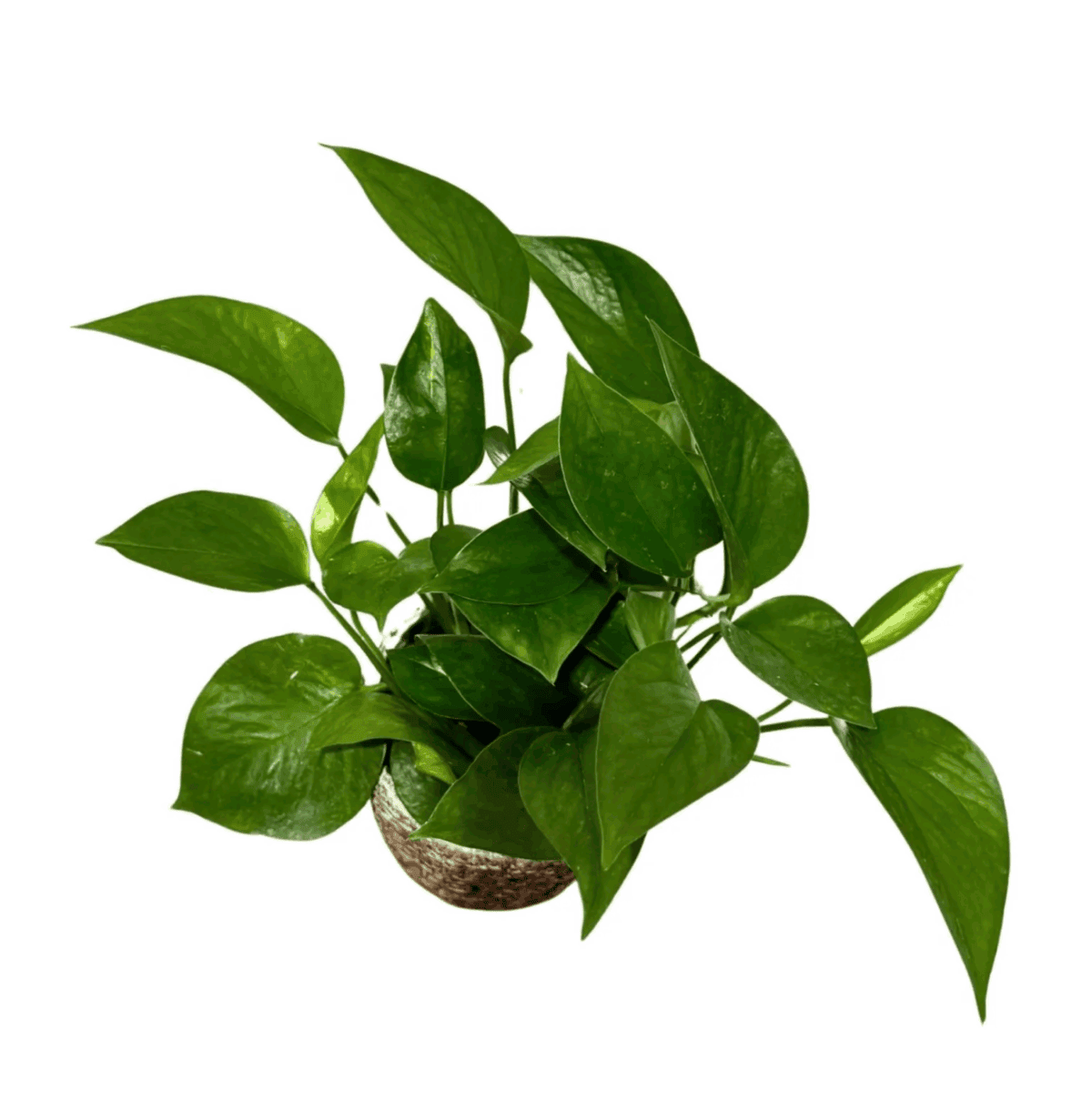
The Jade pothos is actually a mutation of the Golden pothos. This green pothos plant is notable for thick, dark green leaves and thicker stems. They’re especially resilient, making them a great option for anyone who hasn’t had much luck growing plants in the past.
| Common Name(s) | Jade pothos |
| Botanical Name | Epipremnum aureum Jade |
| Family | Araceae |
| Plant Type | Perennial, vine |
| Mature Size | 20 to 40 ft. long, 3 to 6 ft. wide |
| Sun Exposure | Full, bright indirect light |
| Soil Type | Moist, well-draining |
| Soil pH | Acidic, 6.0 to 7.0 |
| USDA Hardiness Zones | 10-12 |
| Native Area | None (cultivar) |
Jessenia Pothos
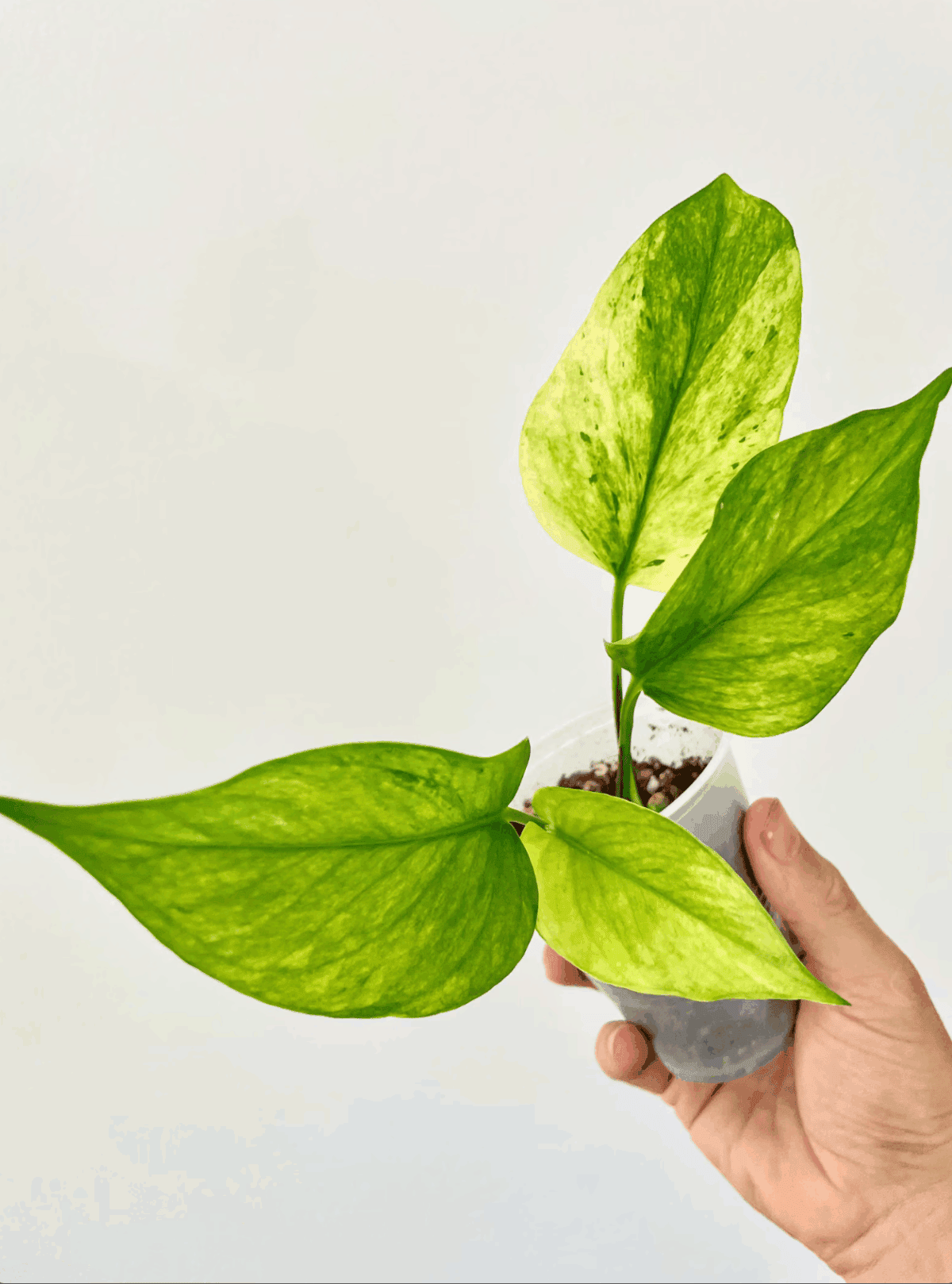
The Jessenia pothos is another “true” pothos plant. The marbled variegation spread across the green color of its leaves visually separates it from the other varieties. In the wild, its vines can grow up to 30 feet in length.
| Common Name(s) | Jessenia pothos |
| Botanical Name | Epipremnum aureum Jessenia |
| Family | Araceae |
| Plant Type | Perennial, vine |
| Mature Size | 10 ft. in length (indoors), 30 ft. in length (outdoors) |
| Sun Exposure | Partial, bright indirect light |
| Soil Type | Moist, well-draining |
| Soil pH | Acidic, 6.0 to 7.0 |
| USDA Hardiness Zones | 10-12 |
| Native Area | Asia |
Manjula Pothos
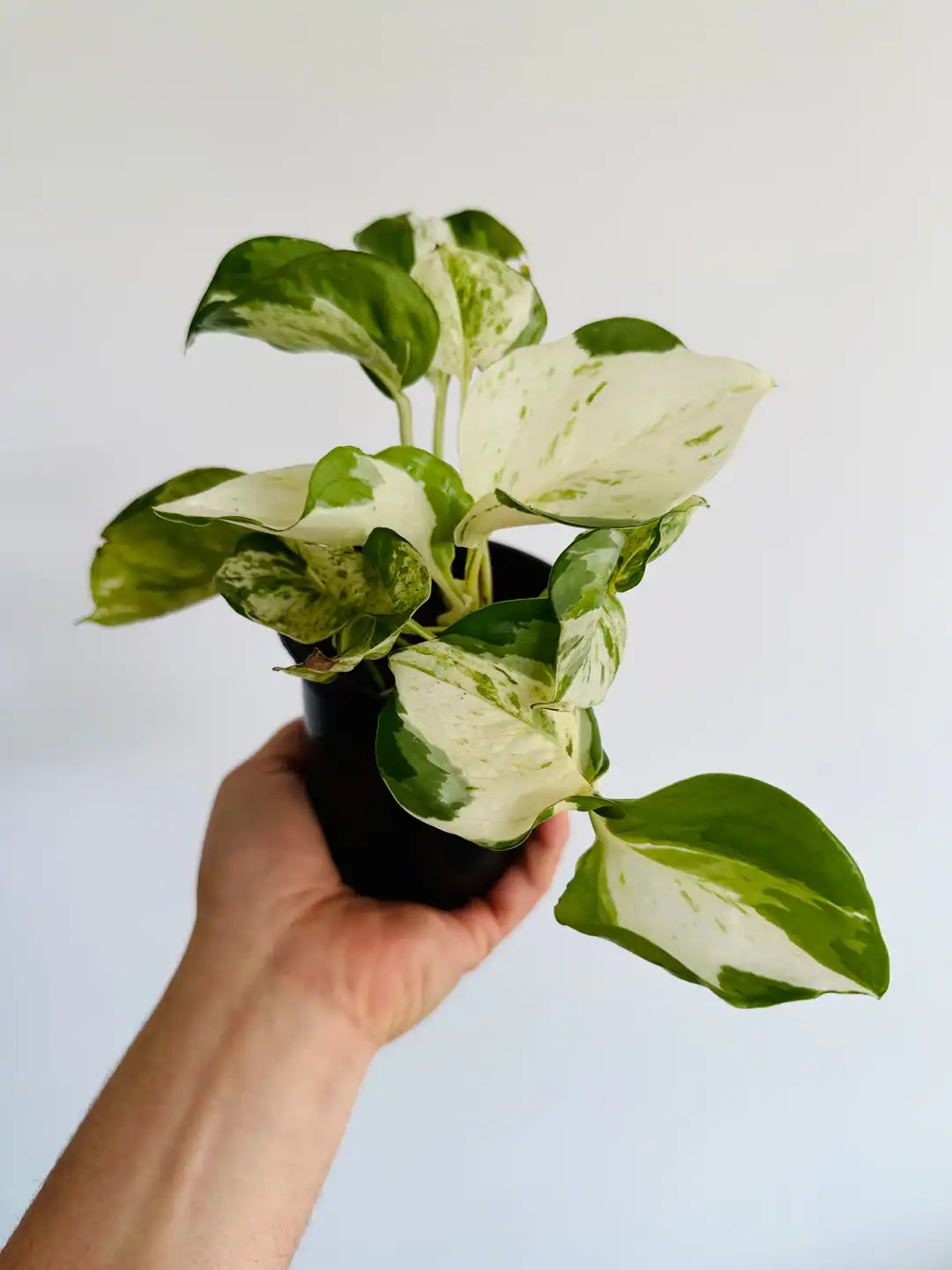
Complete with large leaves shaped like hearts and various shades of white and green spread across them, the Manjula pothos is much more colorful than many other types of pothos plants. It prefers indirect, bright light but it can also get by with minimal sun exposure as well.
| Common Name(s) | Manjula pothos |
| Botanical Name | Epipremnum aureum Manjula |
| Family | Araceae |
| Plant Type | Vine, perennial |
| Mature Size | Up to 10 ft. long, 1 to 4 ft. wide |
| Sun Exposure | Partial |
| Soil Type | Moist, well-draining |
| Soil pH | Slightly acidic, 6.0 to 6.5 |
| USDA Hardiness Zones | 10-12 |
| Native Area | None (cultivar) |
Marble Queen Pothos
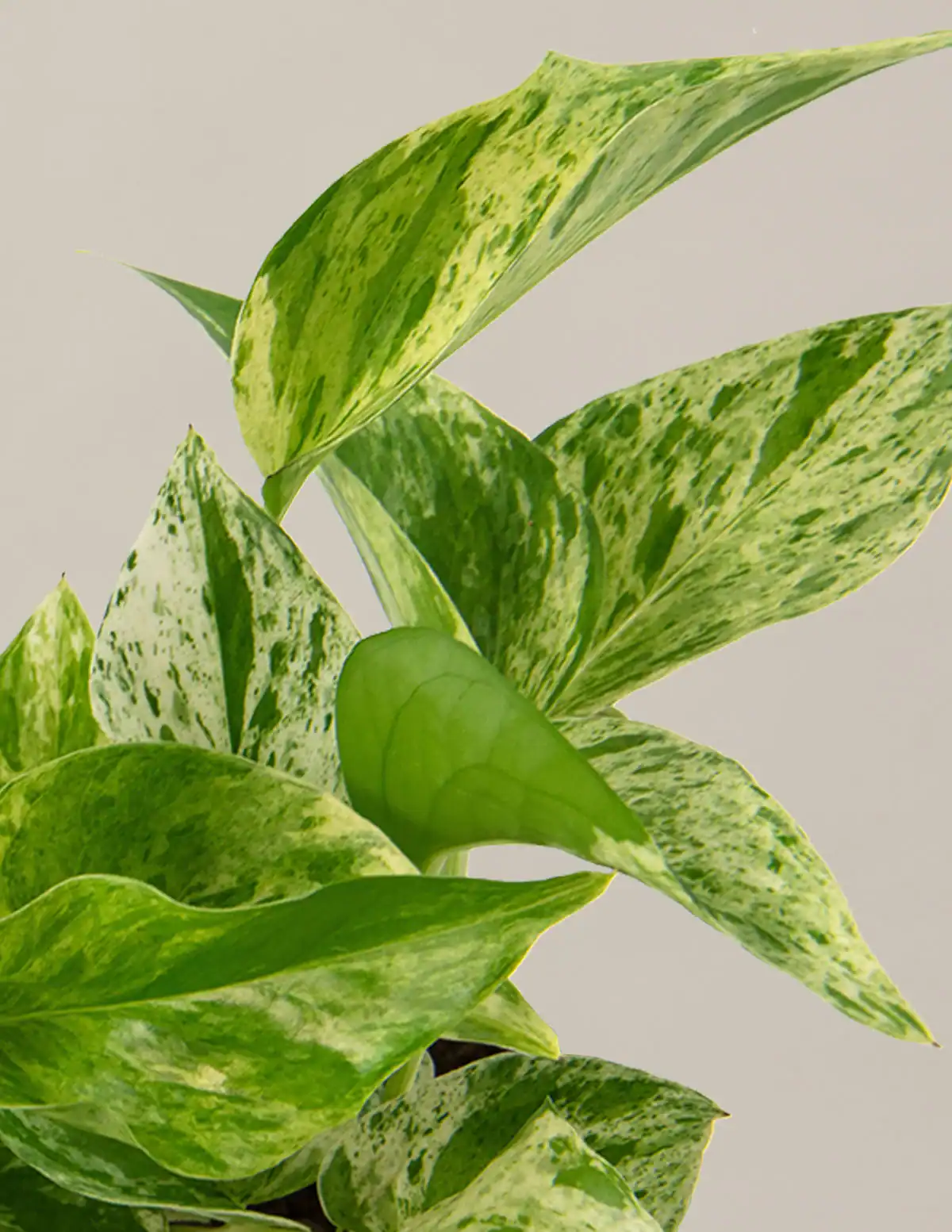
True to its name, the Marble Queen pothos has cream and white variegations on its leaves, reminiscent of a marble countertop. Like most other pothos plants, it has heart-shaped leaves and prefers bright, indirect light.
| Common Name(s) | Marble queen pothos |
| Botanical Name | Epipremnum aureum Marble Queen |
| Family | Araceae |
| Plant Type | Perennial, vine |
| Mature Size | 10 ft. long, 3 ft. wide |
| Sun Exposure | Moderate to bright indirect light |
| Soil Type | Moist, loamy, well-draining |
| Soil pH | Acidic, 6.1 to 7.3 |
| USDA Hardiness Zones | 11-12 |
| Native Area | Australia |
Neon Pothos
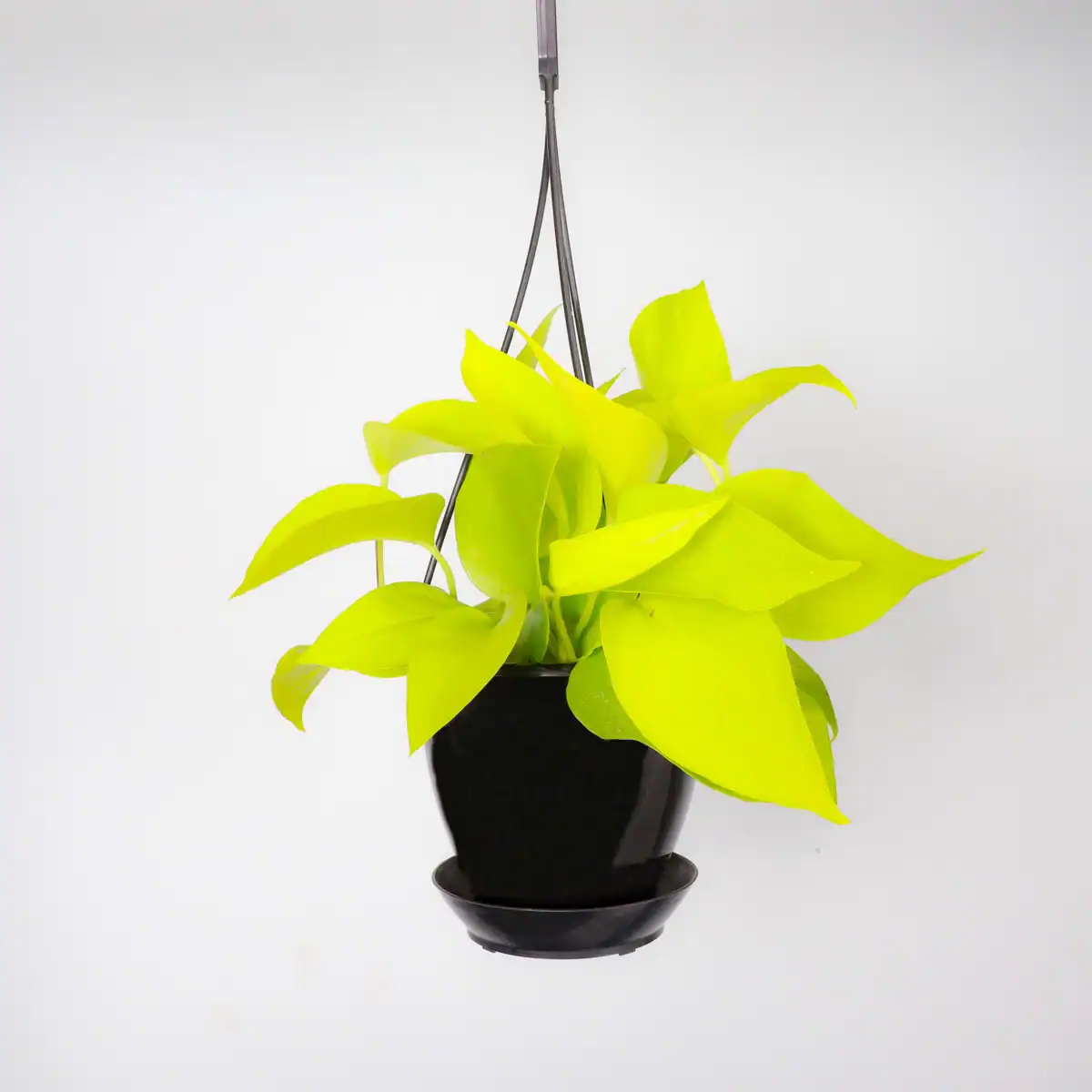
The Neon pothos is easily identified by the bright chartreuse color of its leaves. Unlike many other types of pothos, the coloring on the leaves of this plant is relatively uniform all the way through.
| Common Name(s) | Neon pothos |
| Botanical Name | Epipremnum aureum Neon |
| Family | Araceae |
| Plant Type | Perennial, vine |
| Mature Size | Up to 40 ft. in length, 3 to 6 ft. wide |
| Sun Exposure | Bright indirect sunlight |
| Soil Type | Moist, well-draining |
| Soil pH | Slightly acidic, 6.1 to 6.8 |
| USDA Hardiness Zones | 10-12 |
| Native Area | Australia |
Pearls and Jade Pothos
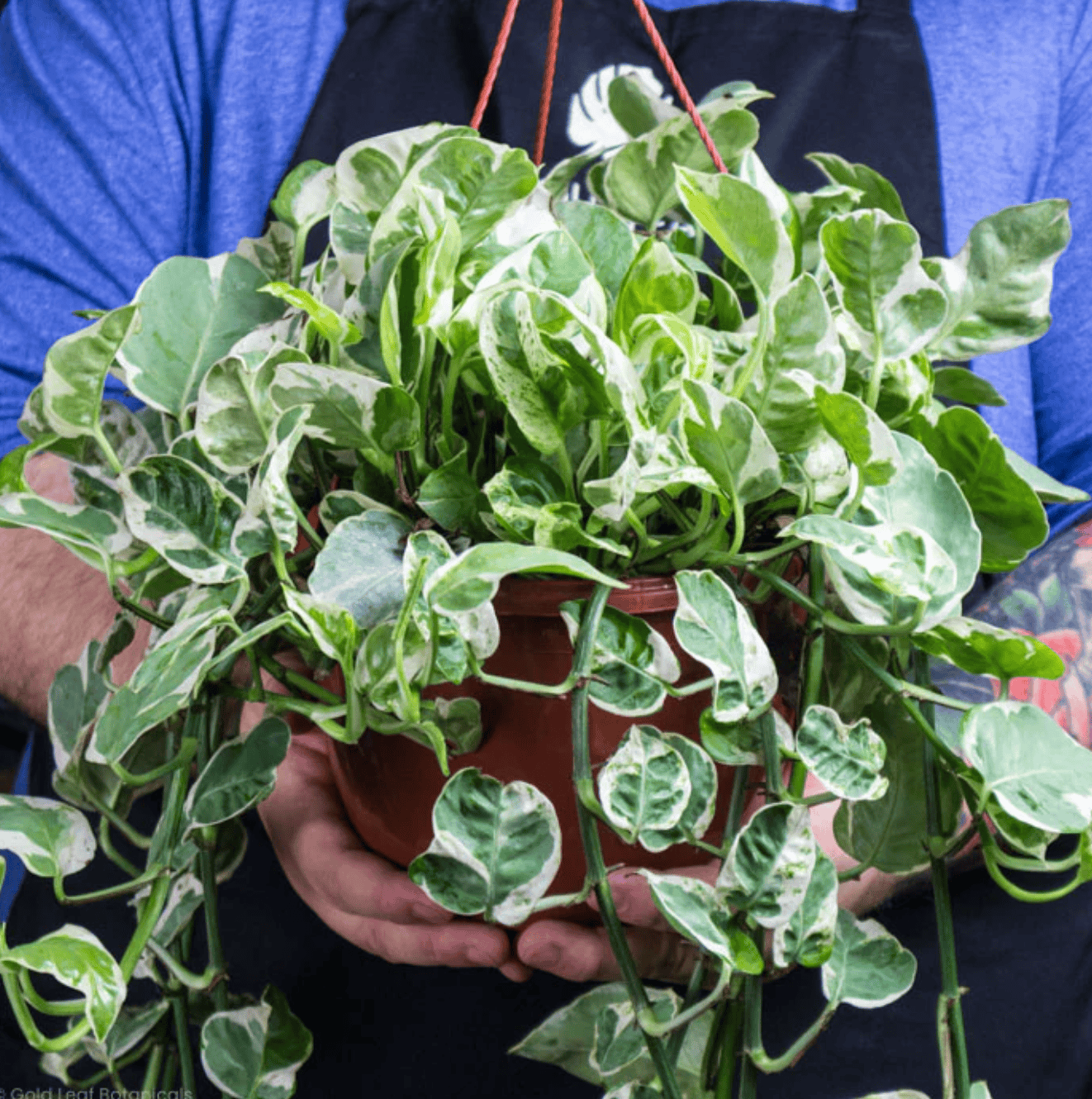
This ornamental-looking plant grows slower than the plain Jade pothos, thanks to the white and green variegation across its leaves. It has unique variegation patterns and features thin, smaller leaves when compared to many other pothos plants.
| Common Name(s) | Pearls and Jade pothos |
| Botanical Name | Epipremnum aureum Pearls and Jade |
| Family | Araceae |
| Plant Type | Perennial, vine |
| Mature Size | 6 to 10 ft. long |
| Sun Exposure | Bright indirect sunlight |
| Soil Type | Moist, well-draining |
| Soil pH | Slightly acidic, 6.0 to 7.0 |
| USDA Hardiness Zones | 9-12 |
| Native Area | South Pacific |
Pothos N’Joy
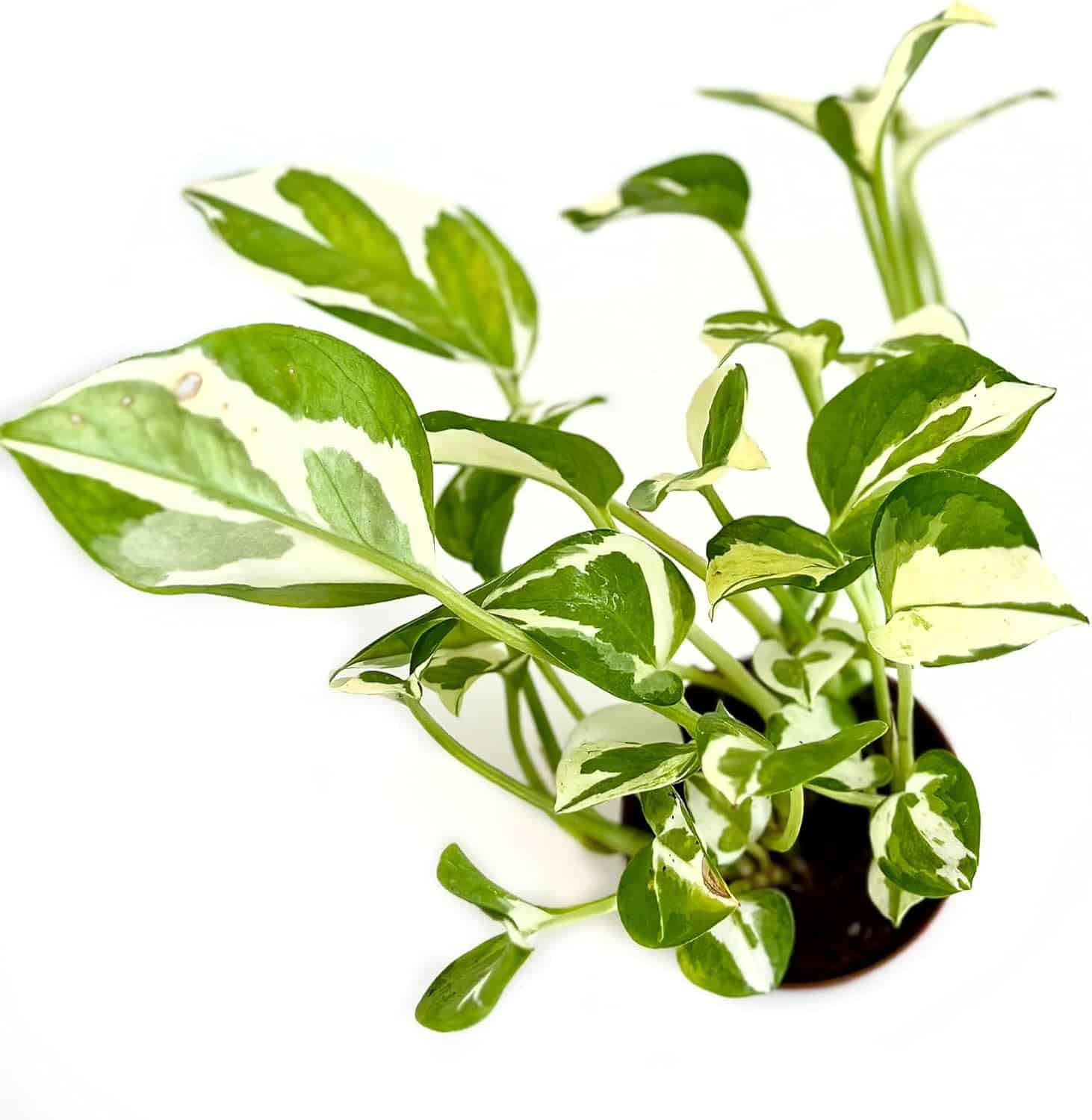
The Pothos N’Joy is best known for its well-defined white and green variegations. These plants tend to thrive in areas with lots of bright, indirect sunlight and prefer to dry between waterings.
| Common Name(s) | N’joy pothos |
| Botanical Name | Epipremnum aureum ‘n’joy’ |
| Family | Araceae |
| Plant Type | Perennial, vine |
| Mature Size | 10 ft. in length |
| Sun Exposure | Bright, indirect light |
| Soil Type | Moist, well-draining |
| Soil pH | Acidic, 6.0 to 7.0 |
| USDA Hardiness Zones | 10-11 |
| Native Area | Asia |
Satin Pothos
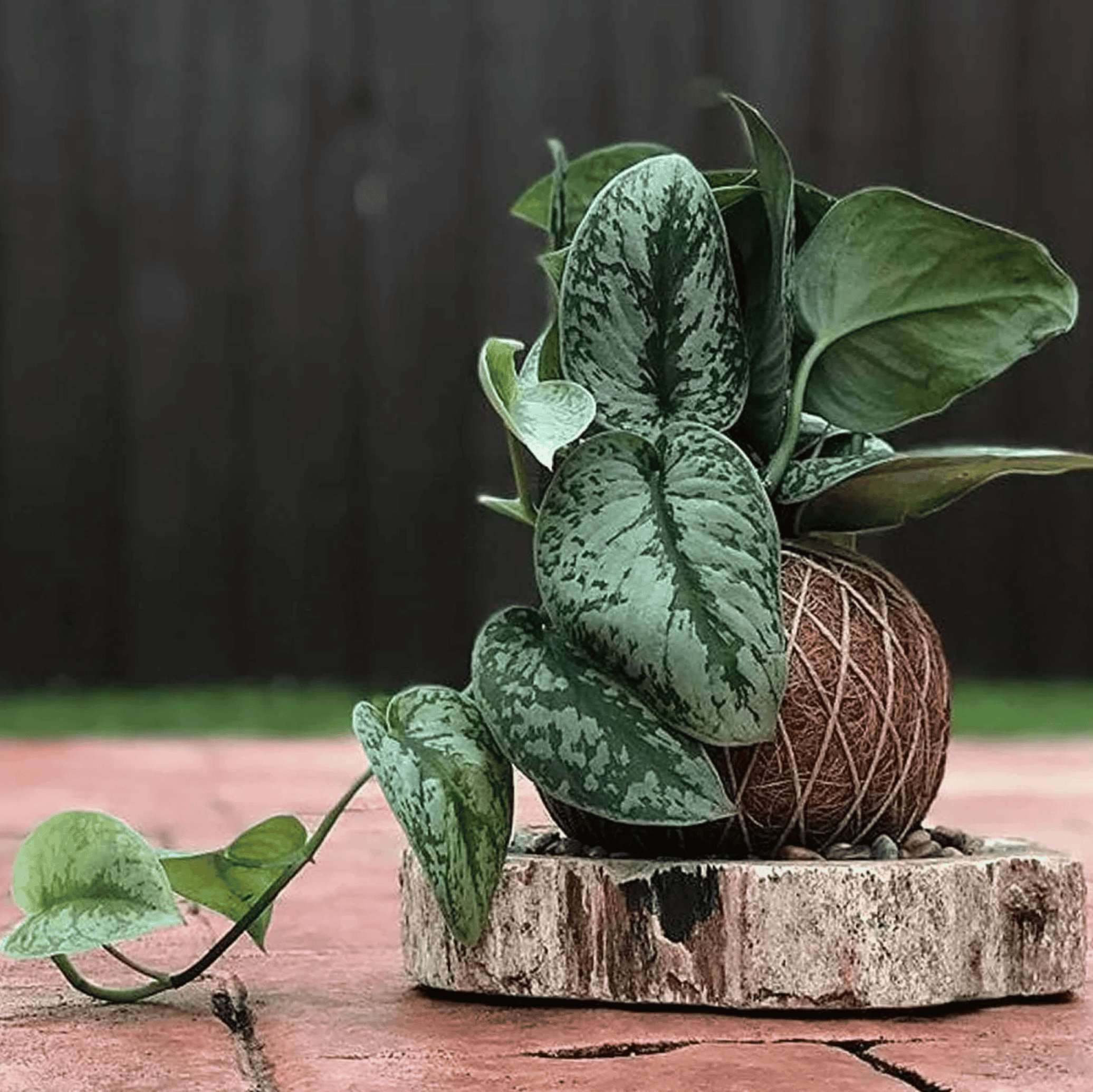
Pin this article
Pin It NowThis next pothos plant is an aggressive vine, growing quickly up whatever surrounds it. This quick growth makes it perfect for a hanging planter, though, as the silvery-grey splotches on its leaves will grow increasingly visible as they hang closer and closer to the floor.
| Common Name(s) | Satin pothos, Silk pothos, Silver pothos |
| Botanical Name | Scindapsus pictus |
| Family | Araceae |
| Plant Type | Perennial, vine |
| Mature Size | 4 to 10 ft in length, 4 in. wide |
| Sun Exposure | Partial, bright indirect light |
| Soil Type | Well-draining |
| Soil pH | Acidic, 6.0 to 7.0 |
| USDA Hardiness Zones | 10-12 |
| Native Area | Asia |
Shangri-La Pothos
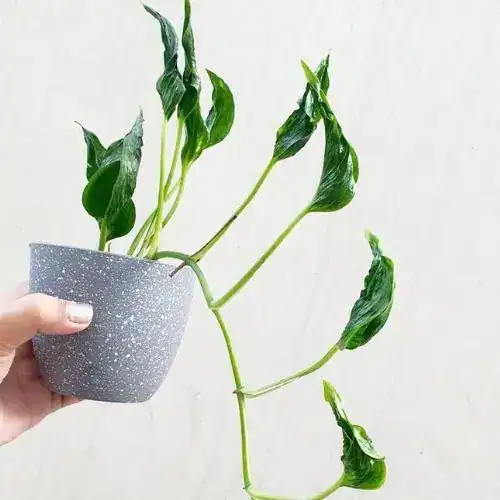
It may not look like it, but the Shangri-La Pothos is actually a true pothos! Visibly, it’s easy to tell this apart from other types of types of pothos plants, thanks to the curled and closed-up leaves that adorn its vines.
| Common Name(s) | Shangri-La pothos, sleeping pothos |
| Botanical Name | Epipremnum aureum Shangri La |
| Family | Araceae |
| Plant Type | Perennial, vining |
| Mature Size | 6 to 12 inches tall, 12 to 24 inches wide |
| Sun Exposure | Moderate indirect light |
| Soil Type | Well-draining |
| Soil pH | Acidic, 6.0 to 7.0 |
| USDA Hardiness Zones | 10-12 |
| Native Area | None (cultivar) |
Snow Queen Pothos
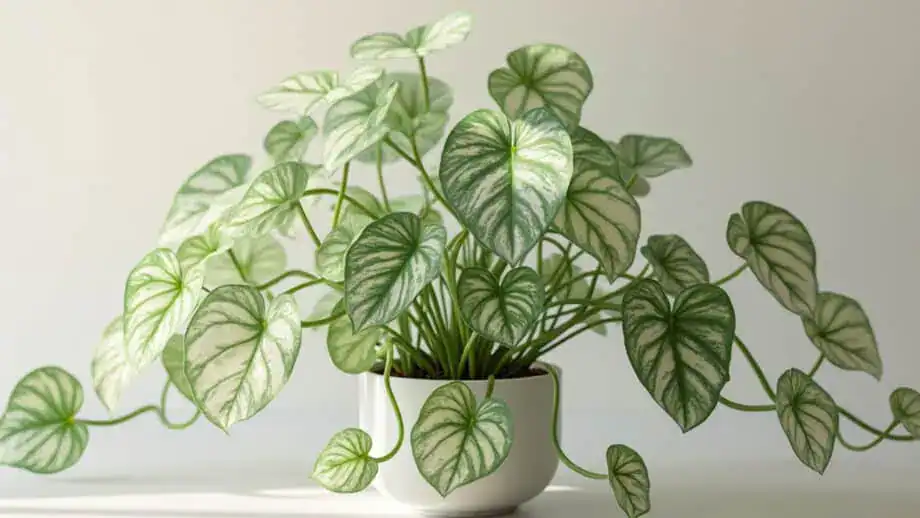
These low-maintenance plants are easily confused with Marble Queen pothos, but you can tell them apart once you notice that the Snow Queen pothos has more white variegation than the marble variety.
| Common Name(s) | Snow Queen pothos |
| Botanical Name | Epipremnum aureum Snow Queen |
| Family | Araceae |
| Plant Type | Vine |
| Mature Size | 6 to 10 ft. in length, 18 in. wide |
| Sun Exposure | Partial, |
| Soil Type | Moist, well-draining |
| Soil pH | 6.0 to 6.5 |
| USDA Hardiness Zones | 10-12 |
| Native Area | Asia |
Variegated Neon Pothos
The Variegated Neon Pothos features the same chartreuse-colored leaves as the regular Neon Pothos, but with the addition of white or yellow variegation on its leaves. Since the naturally occuring variegation is somewhat uncommon, these plants may be slightly harder to find than their non-variegated counterparts.
| Common Name(s) | Variegated Neon Pothos |
| Botanical Name | Pothos Epipremnum aureum Variegated Neon |
| Family | Araceae |
| Plant Type | Trailing, vine, evergreen perennial |
| Mature Size | Up to 20 in. length- |
| Sun Exposure | Bright, indirect sunlight |
| Soil Type | Well-draining |
| Soil pH | Slightly acidic, 6.1 to 6.8 |
| USDA Hardiness Zones | 10-12 |
| Native Area | South Pacific |
Subscribe
Sign up for our weekly newsletter
Proper Potting & Soil Selection
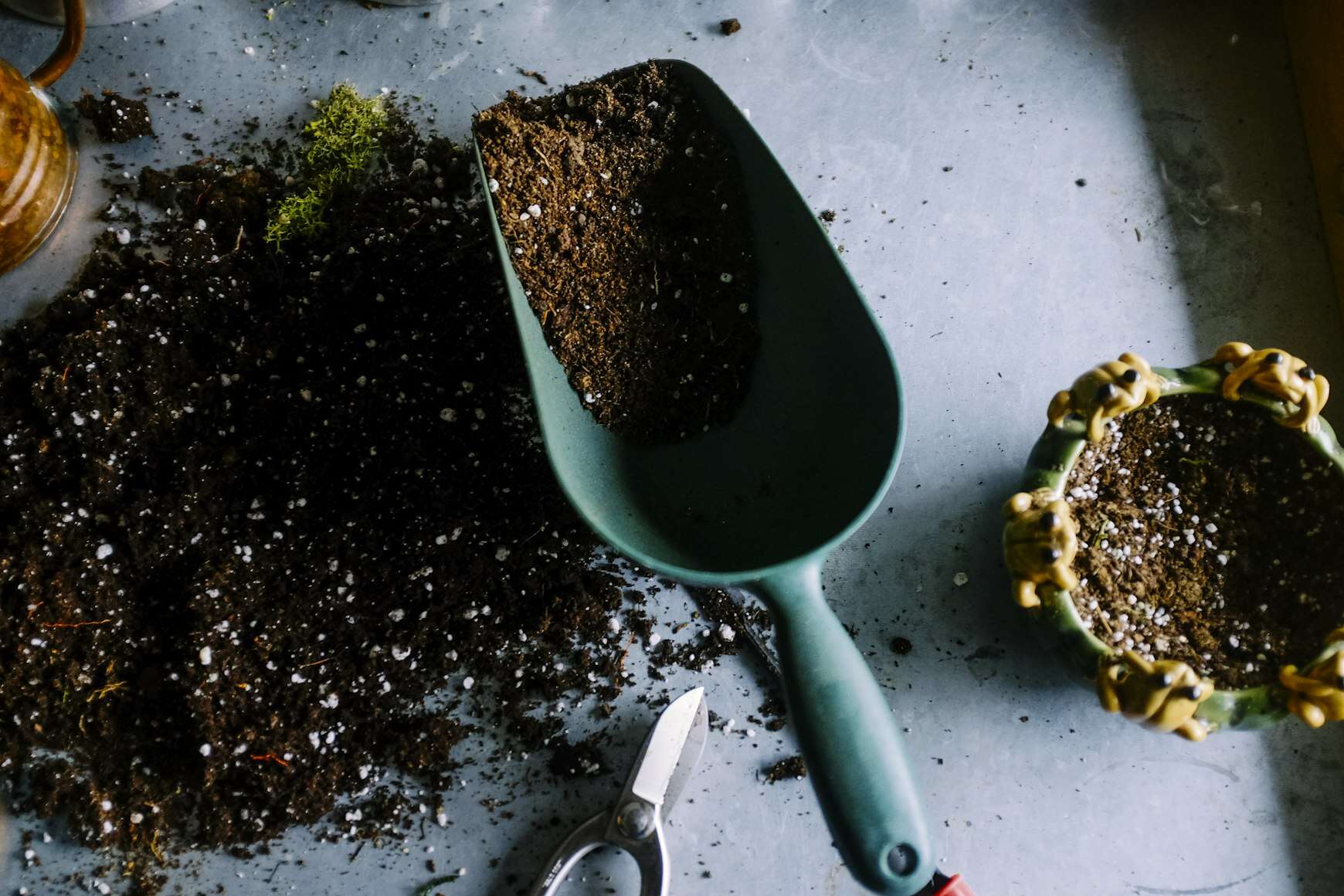
Despite being tropical plants, many types of pothos plants can easily be raised as indoor plants. That said, you’ll need to mimic their natural environments if you want them to thrive, which is why making the proper potting selection is so important.
First, you’ll want to select a pot or container with drainage holes, as this will help prevent water buildup and root rot. Many pothos plants require well-draining soil. You can make the best soil for pothos by mixing your potting soil with peat moss or perlite to give your plants the best chance at success.
Tip
Pothos plants can benefit from using fertilizer, especially during the growing season! It’s best to opt for a balanced mix, like 10-10-10 or 20-20-20. Dilute the fertilizer to 25% or 50% strength to ensure you don’t accidentally burn the roots from over-fertilizing.
When to Water
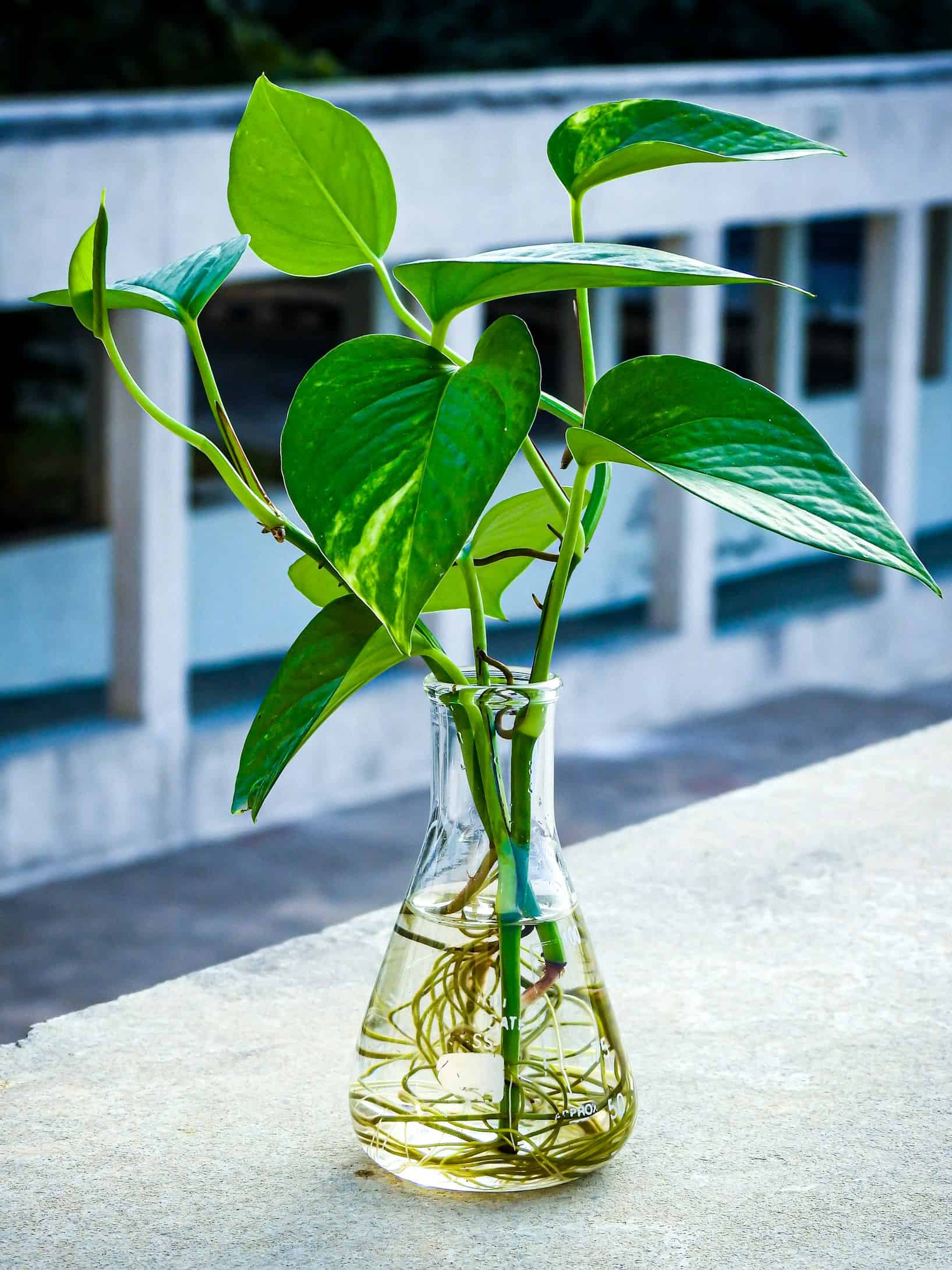
The exact watering schedule you’ll need to follow will vary slightly depending on the types of pothos plants you’re growing. Still, all of the plants follow relatively the same watering schedule, so it will really just come down to monitoring your individual plant and adjusting watering as needed.
When caring for pothos plant, the best approach is to simply water your plant when the top inch or two feels dry to the touch. Assuming the top few inches are dry, you can then apply room-temperature water to the soil until water begins to drain from the bottom of the pot. Let it drain completely to avoid standing water and root rot.
Light Exposure
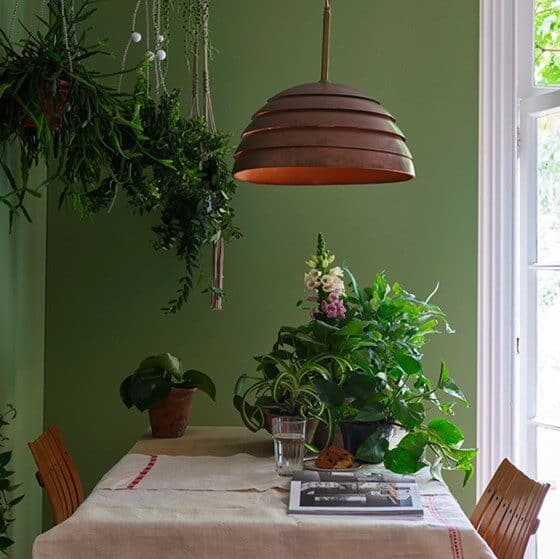
The type of pothos you have will set its overall light tolerance, but these popular houseplants generally do not like direct sunlight. Some varieties can tolerate short-term exposure. However, it’s best to try and give your plants bright, indirect sunlight instead.
Pothos usually want four to eight hours of sunlight today. You should look up the recommendations for your particular pothos to ensure it’s getting enough natural light. If not, you can always supplement the natural light with grow lights.
Just remember to rotate your plant regularly if you want even growth!
Perfecting Propagation
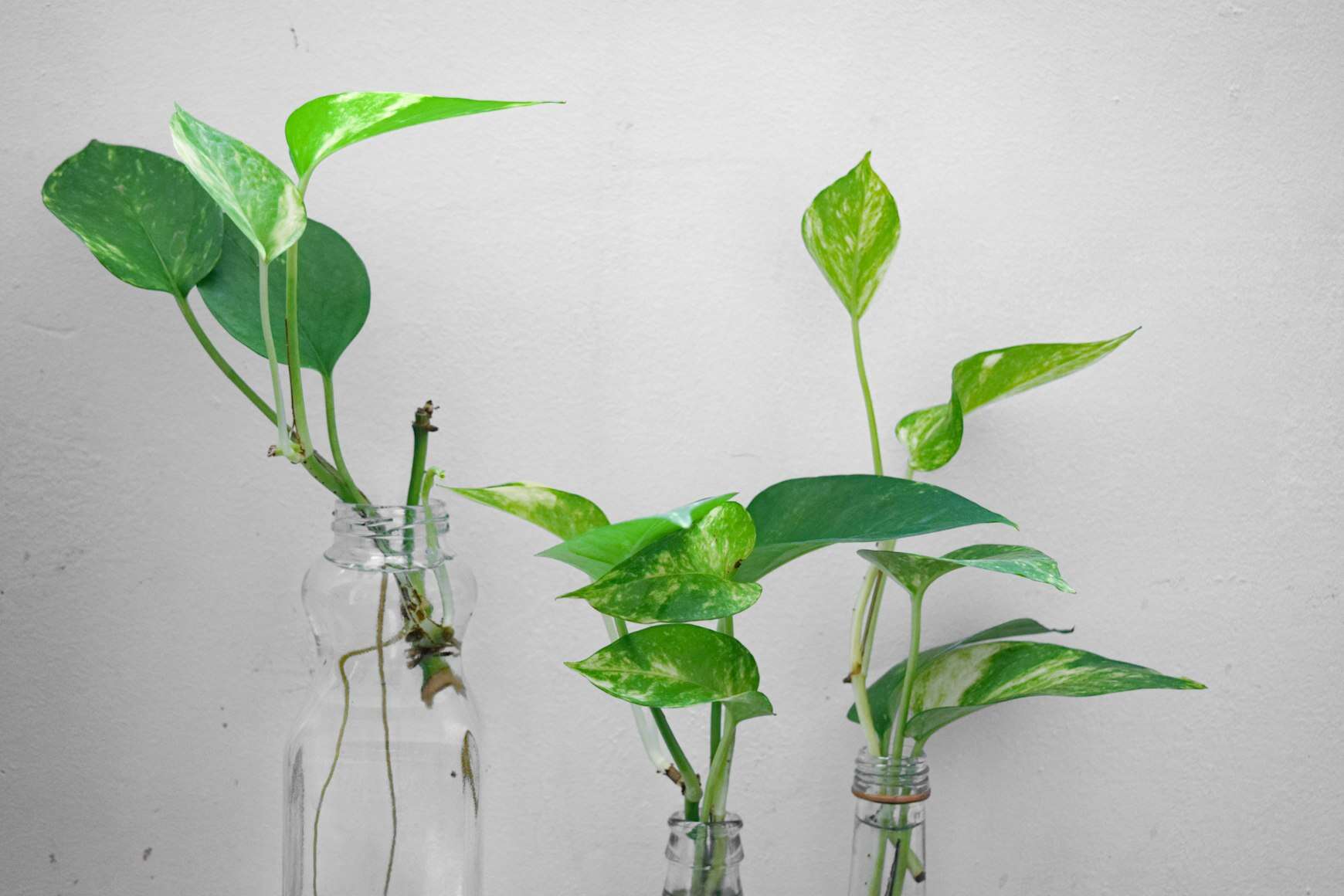
If you’ve already read my post on how to propagate plants, then you should be pretty familiar with this process! All you’ll need is some pruners and a jar to propagate the different types of pothos. If you want to get a bit fancy, you can use a propagation station instead.
Take the clipped stem, place it in the jar, then fill the jar partially with water. Don’t let the water touch the leaves! Switch the water out every few days; roots should form in seven to ten days. You can transplant the pothos once the roots are a few inches long.
Precise Pruning
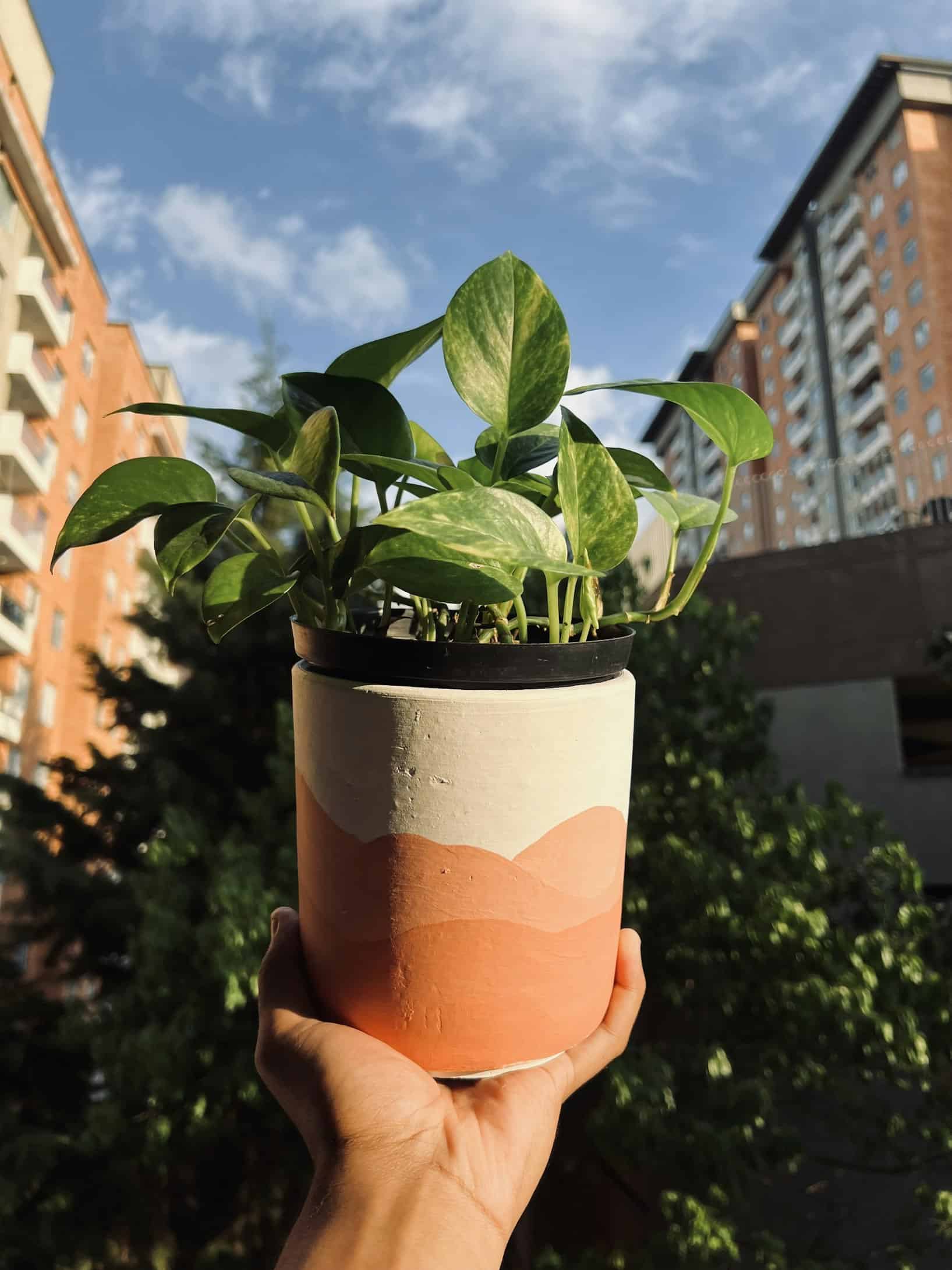
Even if you’re a huge fan of at-home large plants, there might come a time when you want to prune your plants. Pruning is especially beneficial for hanging greenery, as pruning can remove damaged, yellowing leaves and other imperfections.
If you don’t have pruning shear, even sharp scissors will work. The best time to prune your plant is in the growing season, making sure to leave a minimum of two leaf nodes on the vine. To remove the occasional yellow leaf outside of the growing season, just pinch at the base to remove them.
Potential Problems
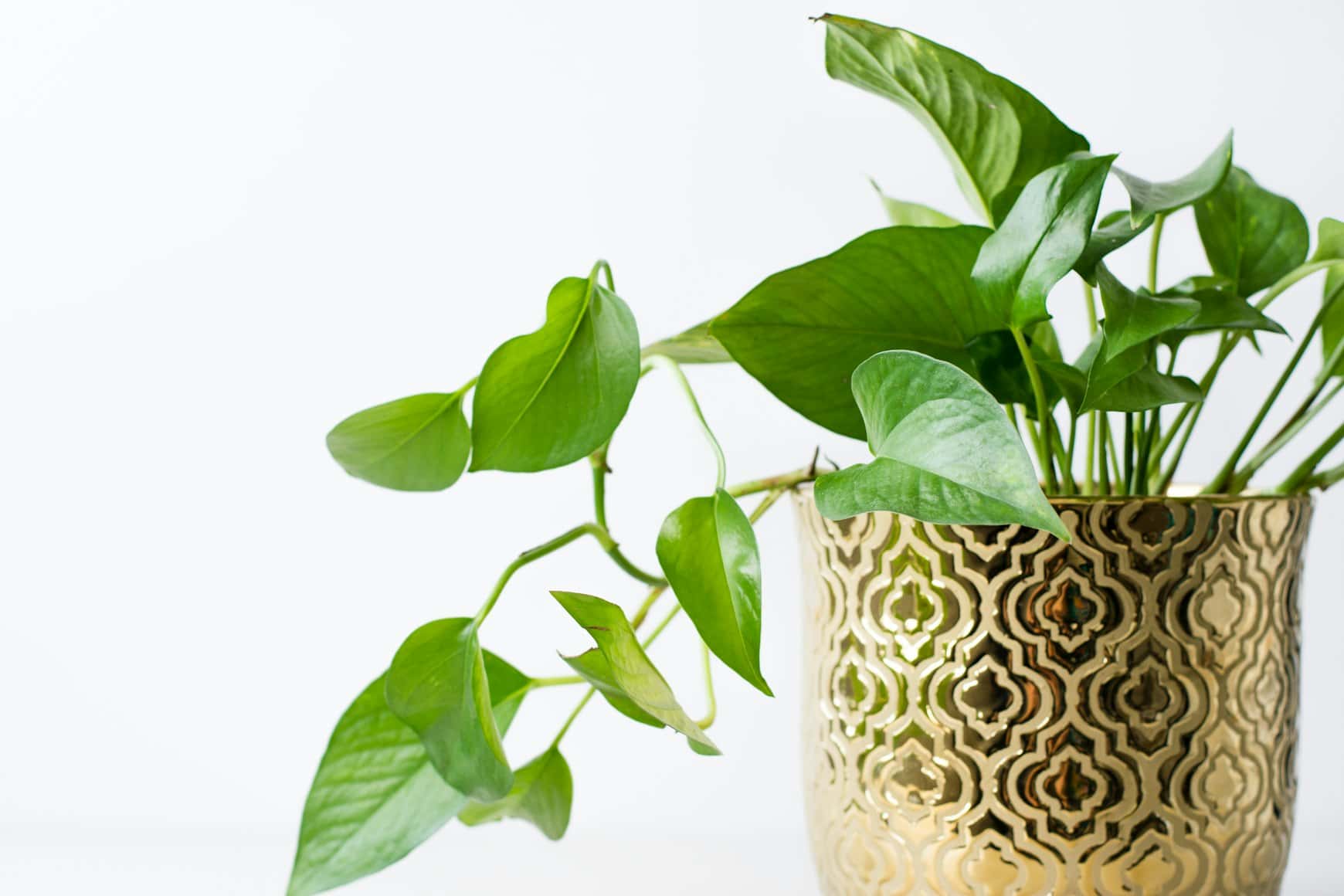
Pretty much all types of pothos plants can suffer the same problems, and you’ll likely run into them at one point or another if you’re trying to decorate your room with plants. Thankfully, these issues are generally very easy to address, so keep these few points in mind.
- Prominent yellow leaves generally indicate you’re watering too much
- Browning leaves often indicate that you’re not watering enough
- Drooping leaves can signal disease, a lack of water, or a pot-bound plant
- Most pests can be wiped off with a cloth
- Neem oil or insecticidal soap works great for more persistent pests
FAQs
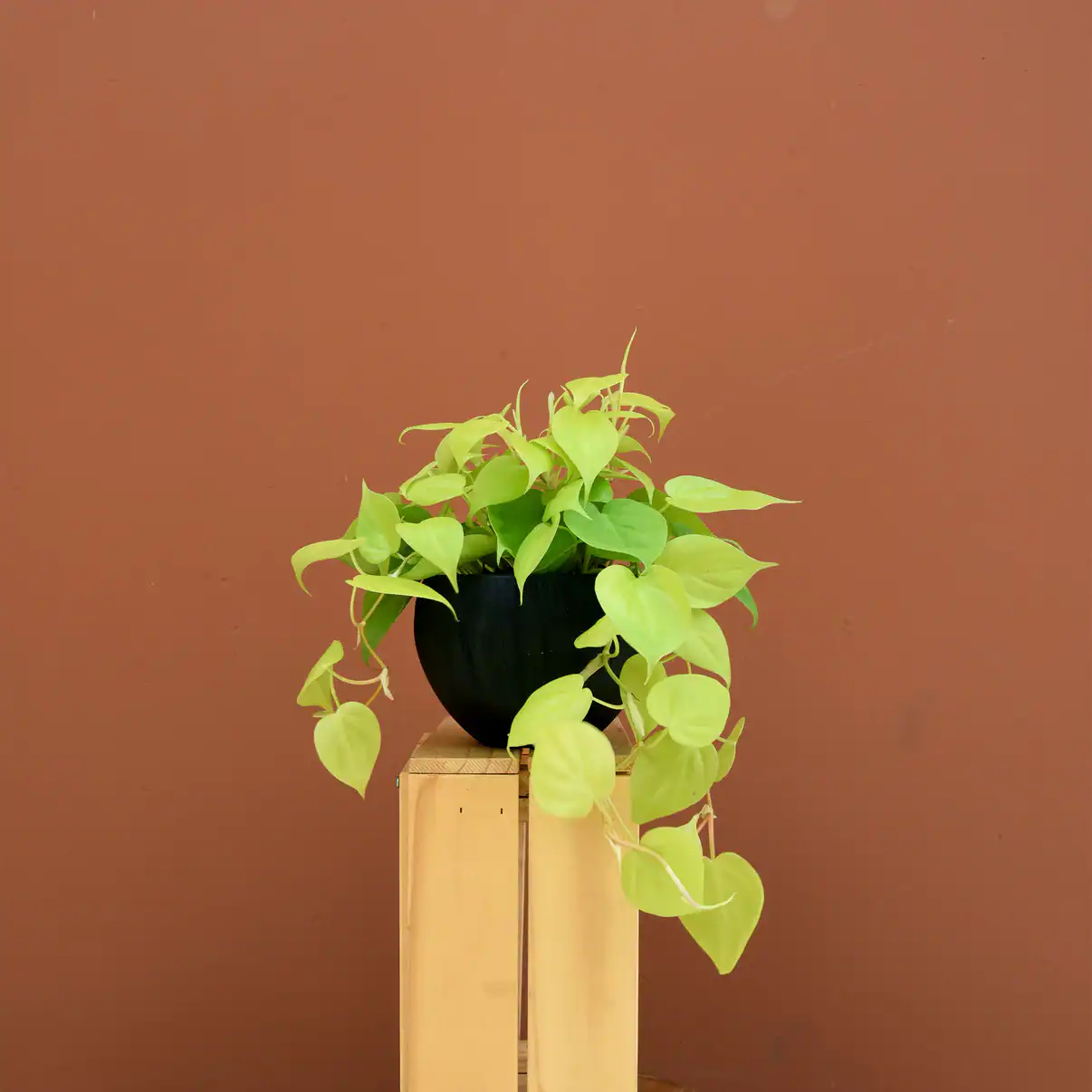
The Skeleton Key Pothos is arguably the rarest pothos variety.
You’ll need to take a close look at your plant. Observe the leaf color and variegation patterns—if any—to make a determination from the different pothos varieties. If you’re still not sure, you’ll likely be able to get a solid answer from your local nursery or gardening store.
The main difference between the two is the presence or lack of variegation. However, variegated pothos may also feature additional colors in the variegations, such as chartreuse, cream, or yellows.
Other Plant Posts
As you’ve seen, there are many different types of pothos plants. This is great, as it means there are plenty of plants for you to experience and grow for yourself! As long as you keep the basics in mind and follow general plant care tips, you shouldn’t find any of these beginner-friendly plants giving you too much trouble. Best of luck with all of your indoor gardening adventures!

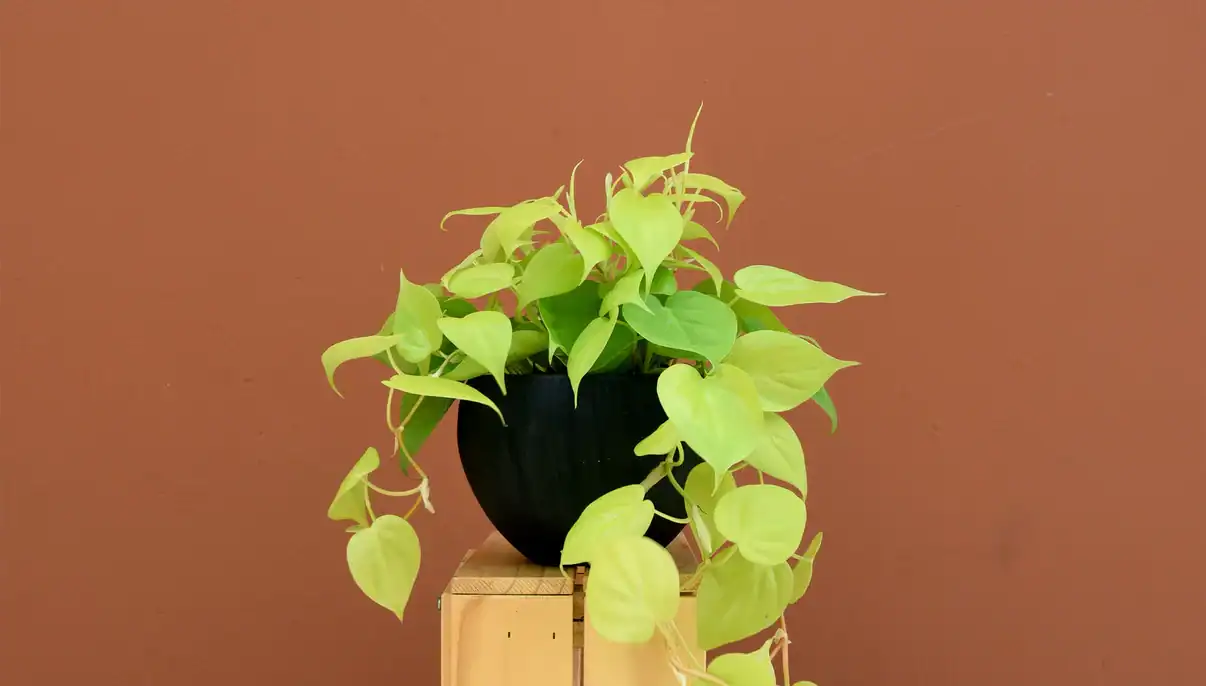




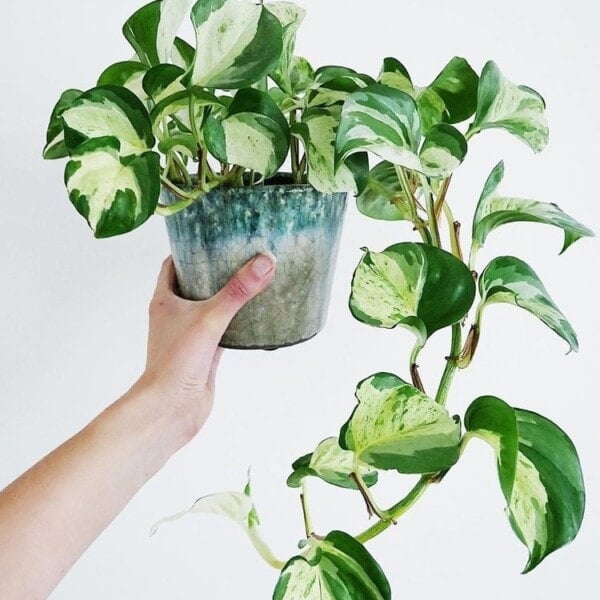
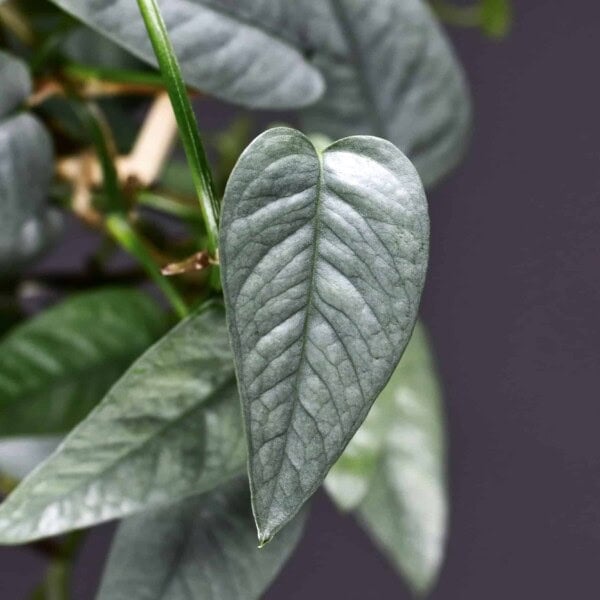

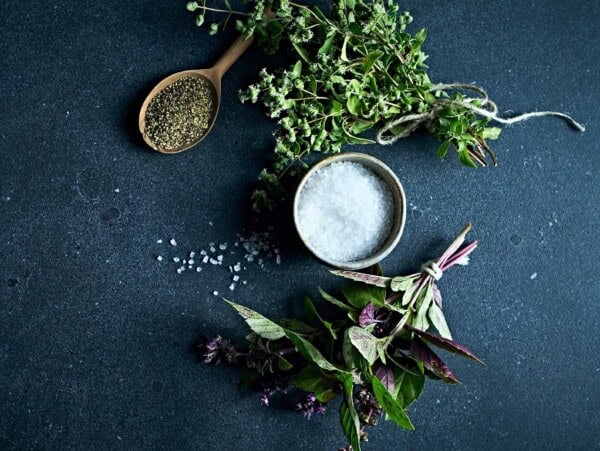









These are my all time favorite plants for first time plant parents! Grab one today and make your space shine!